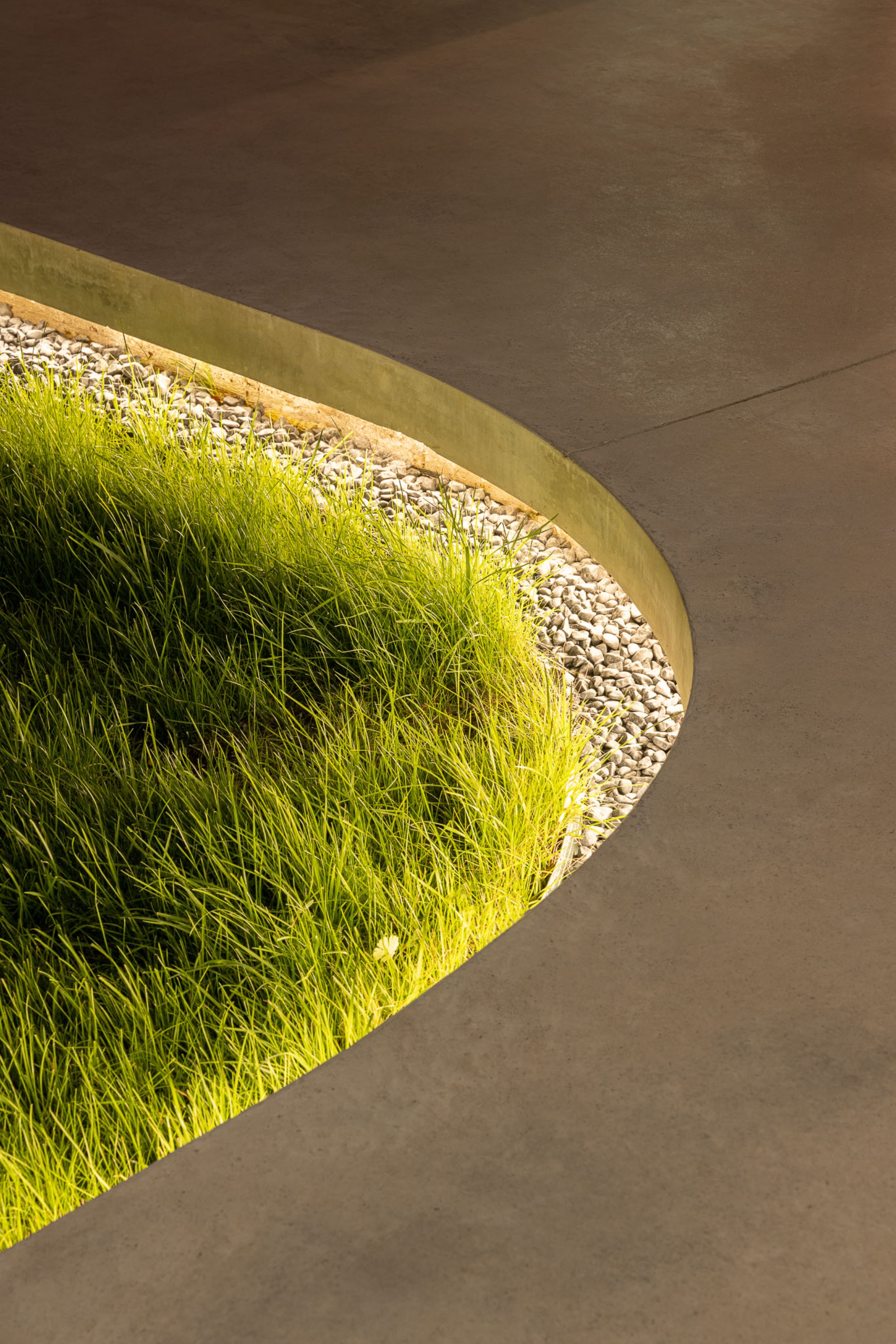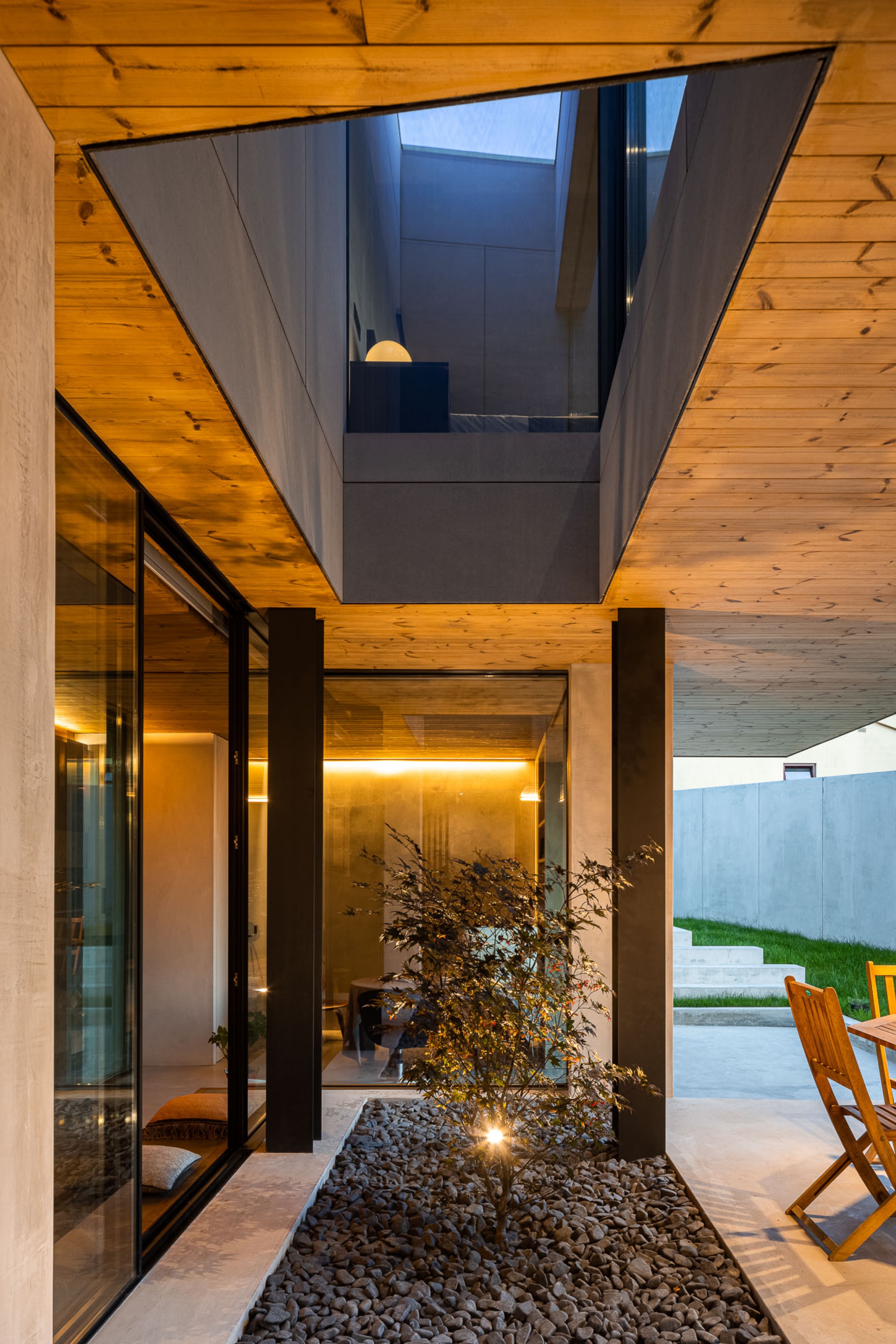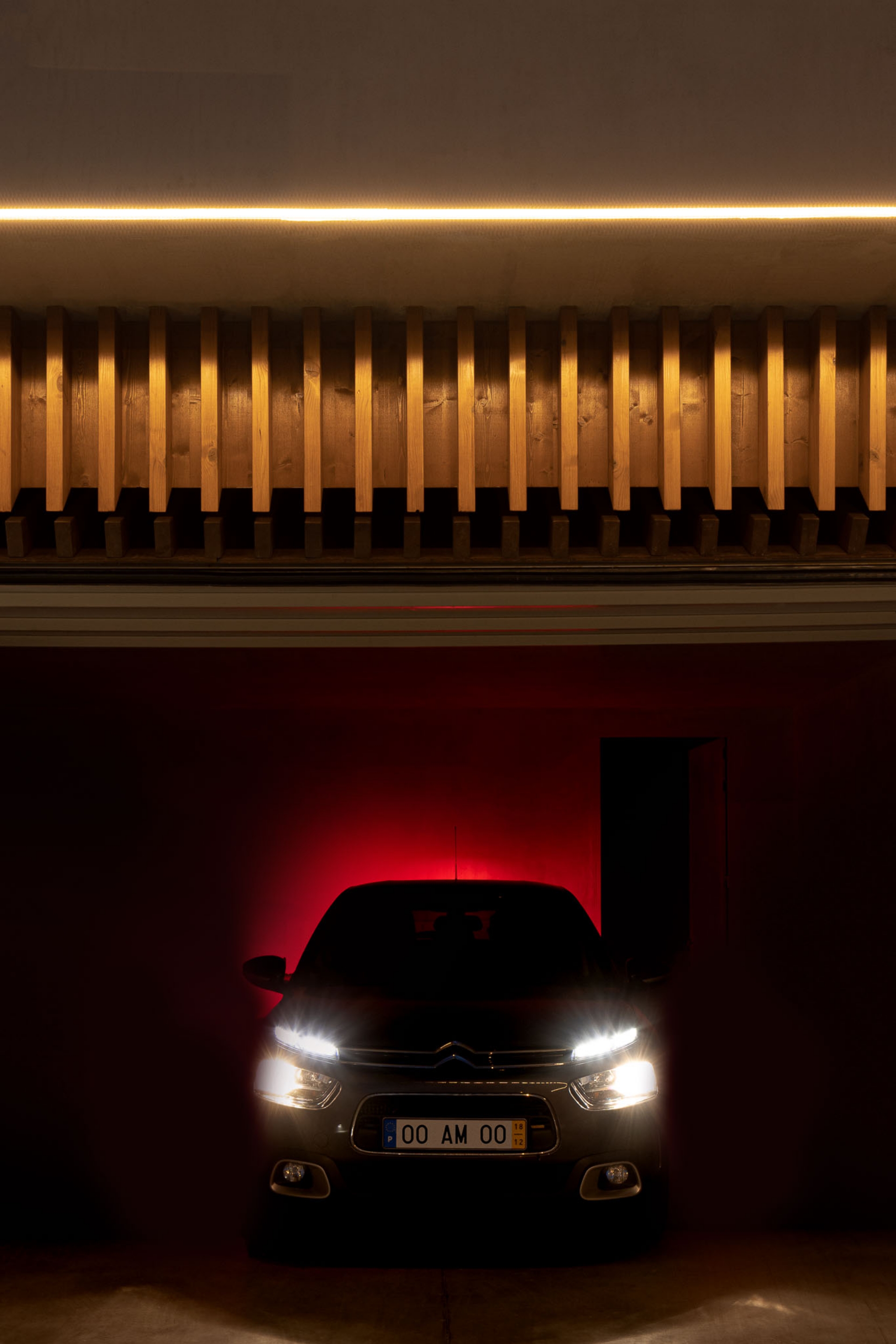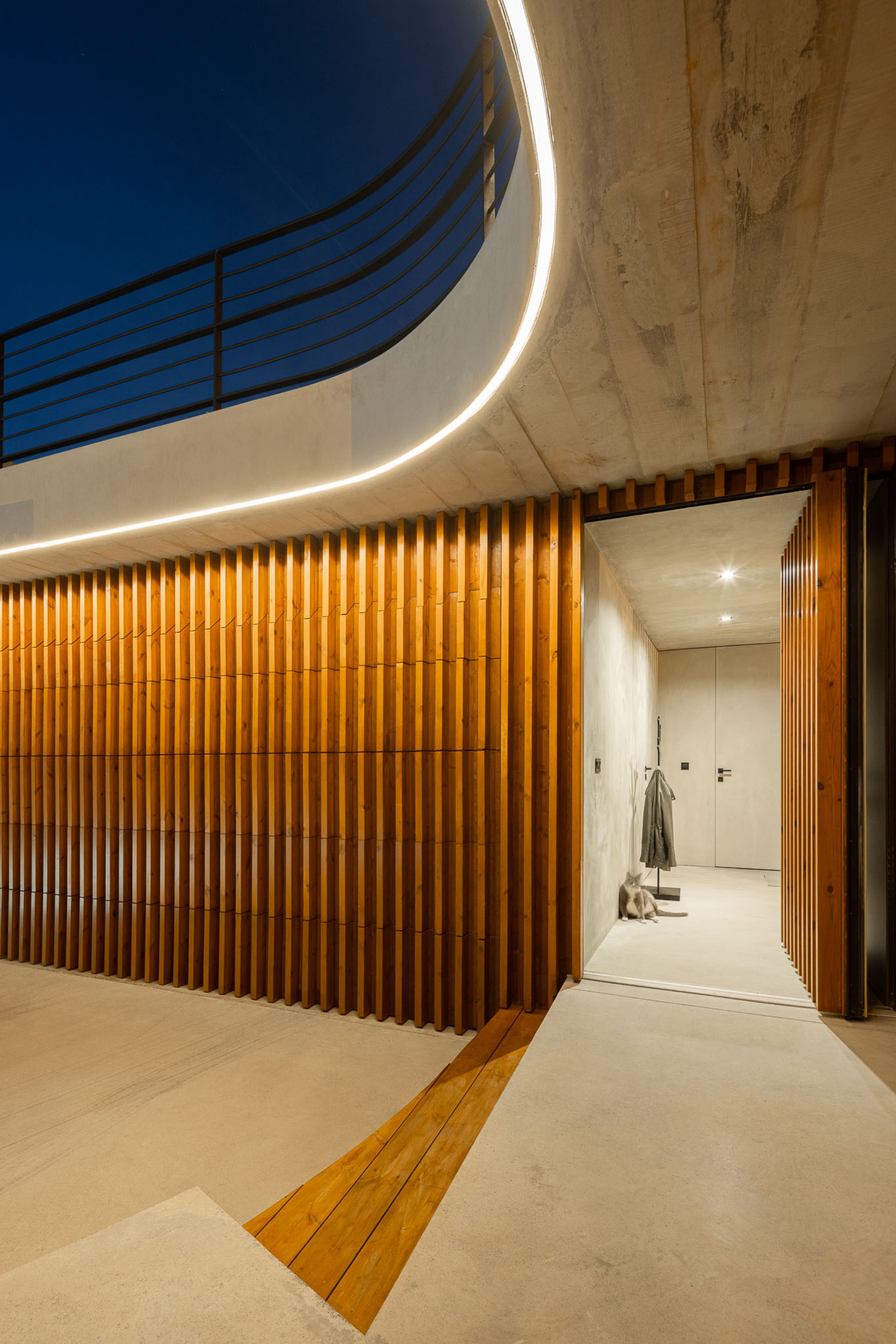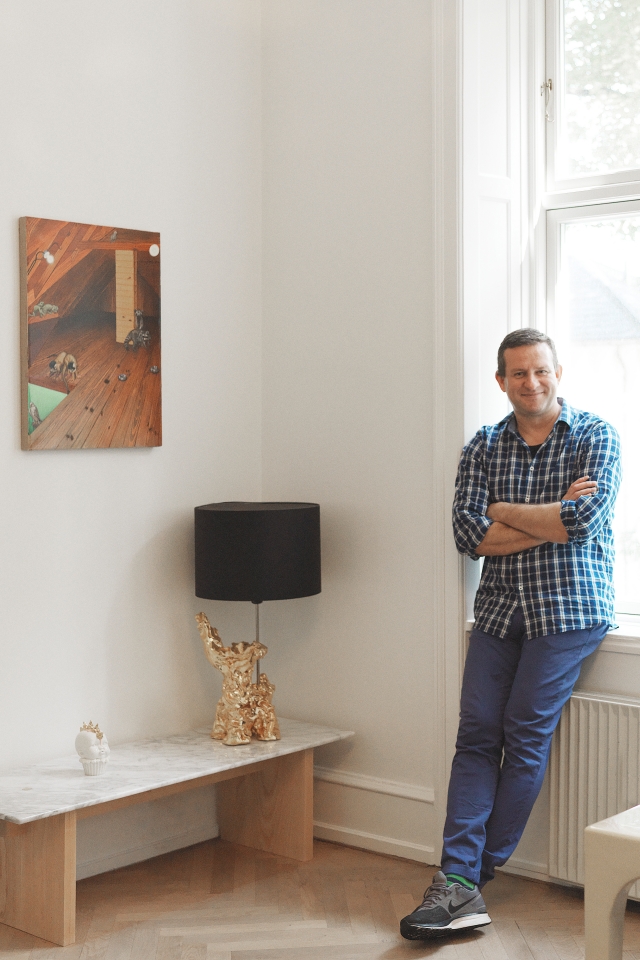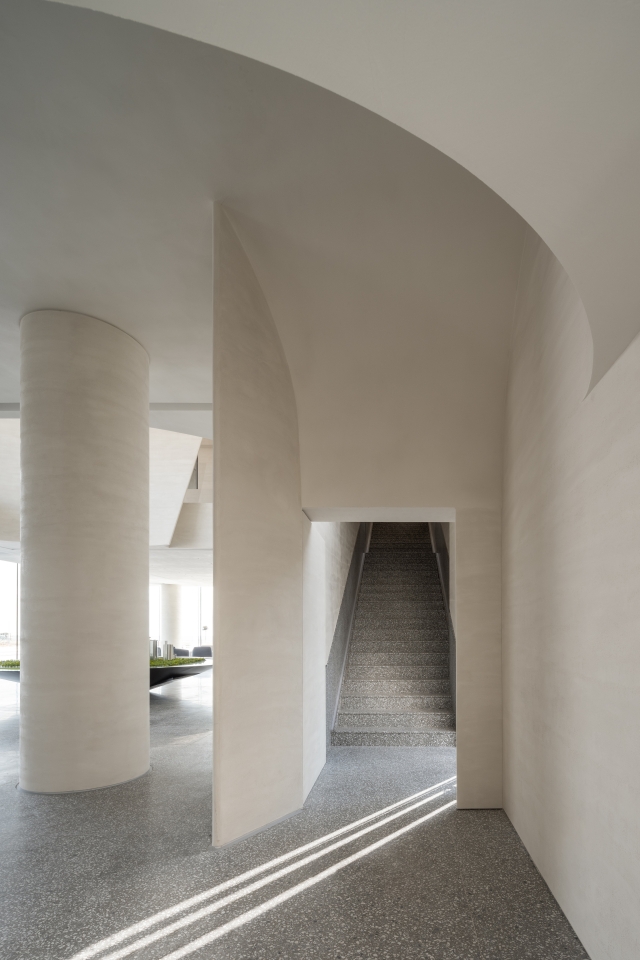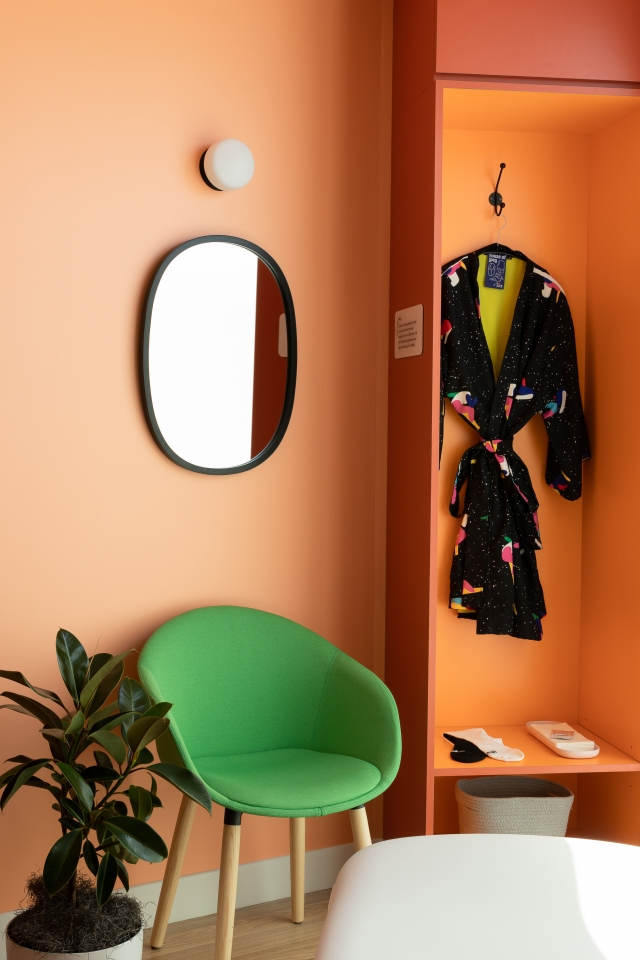Sometimes it is a word, other times as a perception of how a material feels when touched, and others, how the light makes you feel. To AM-arqstudio, every project is a unique relation between intentions and desires translated into what is expected to be the comfort, the pleasure, and the relaxing sensation to the house’s inhabitants.
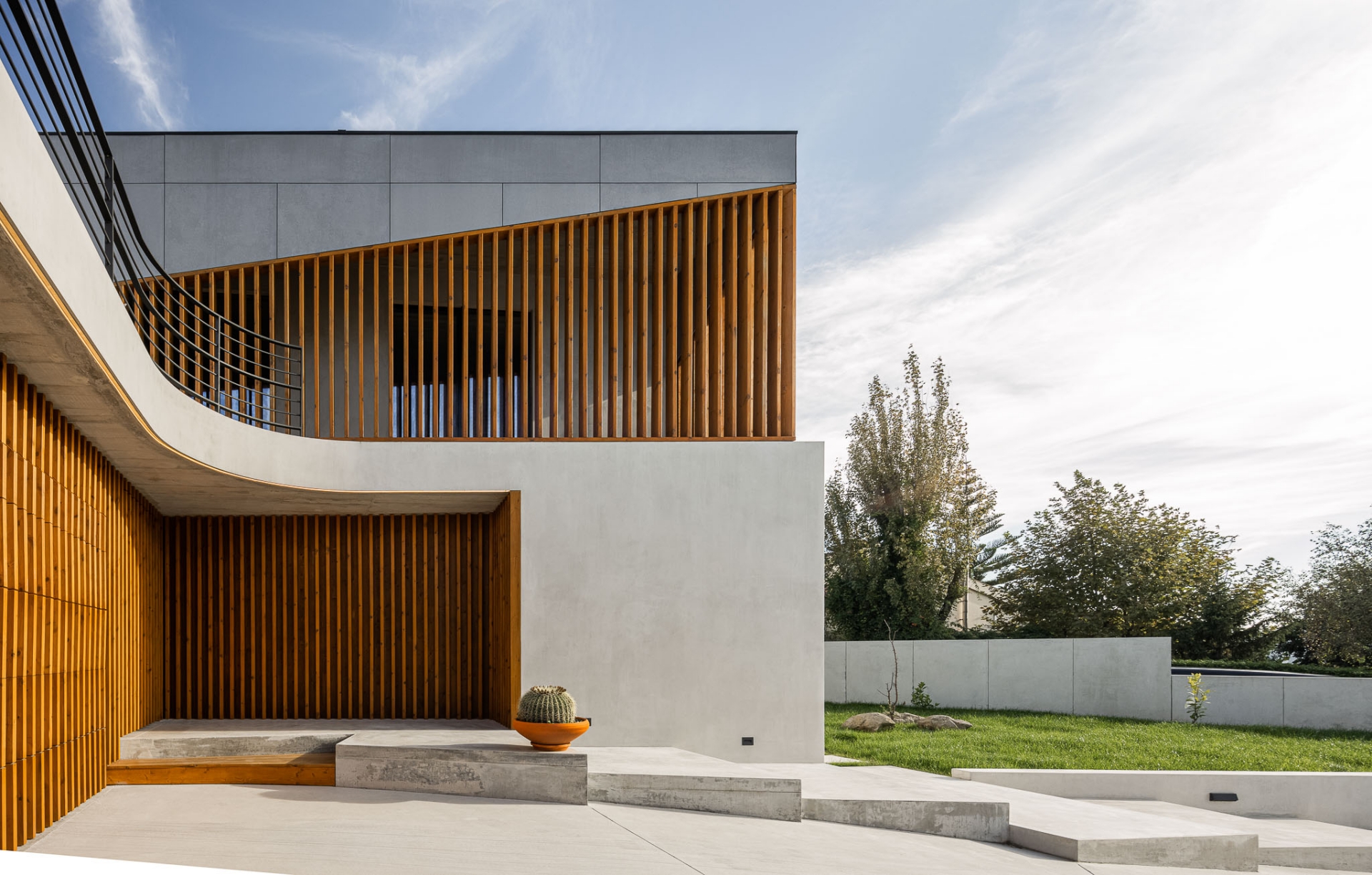
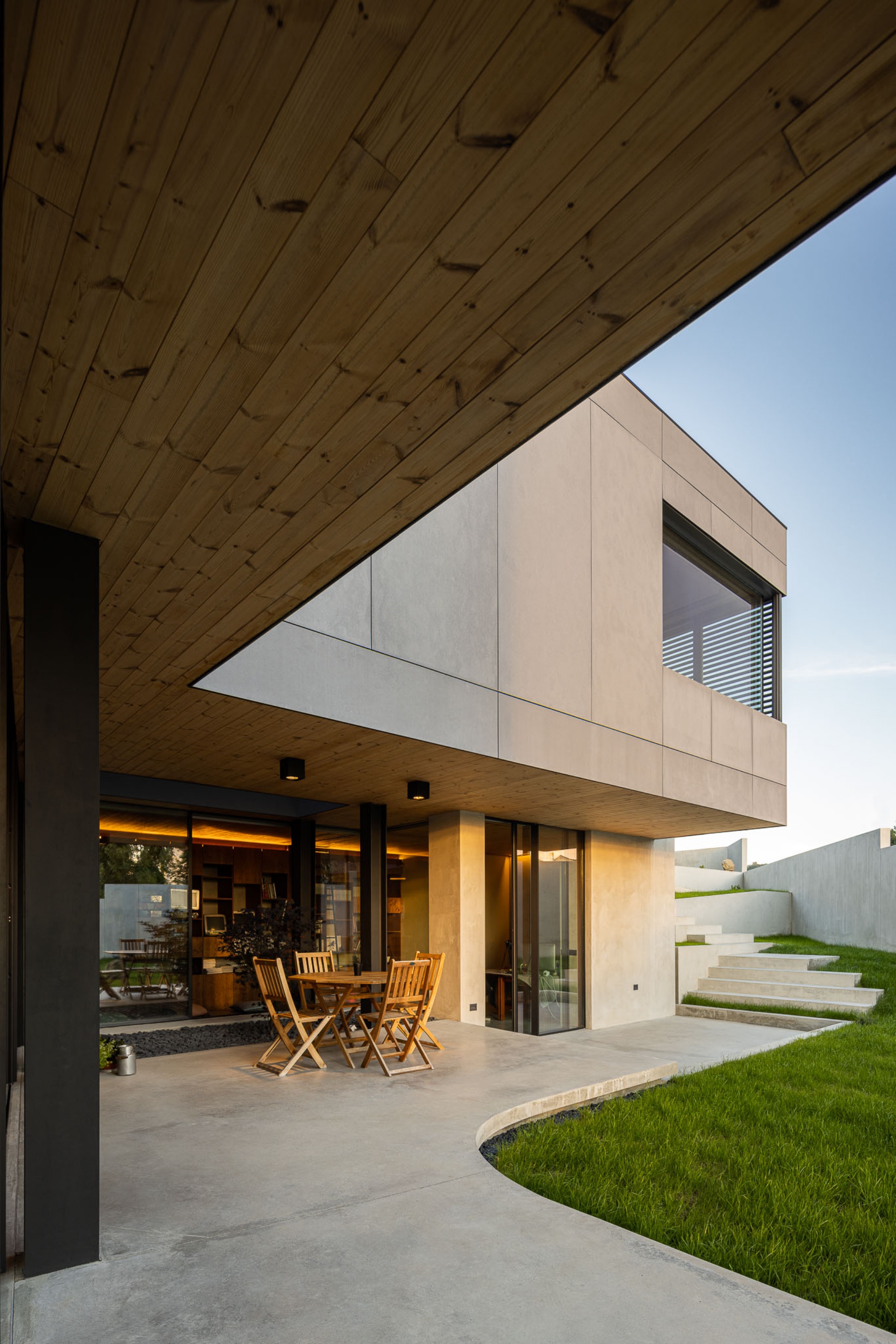
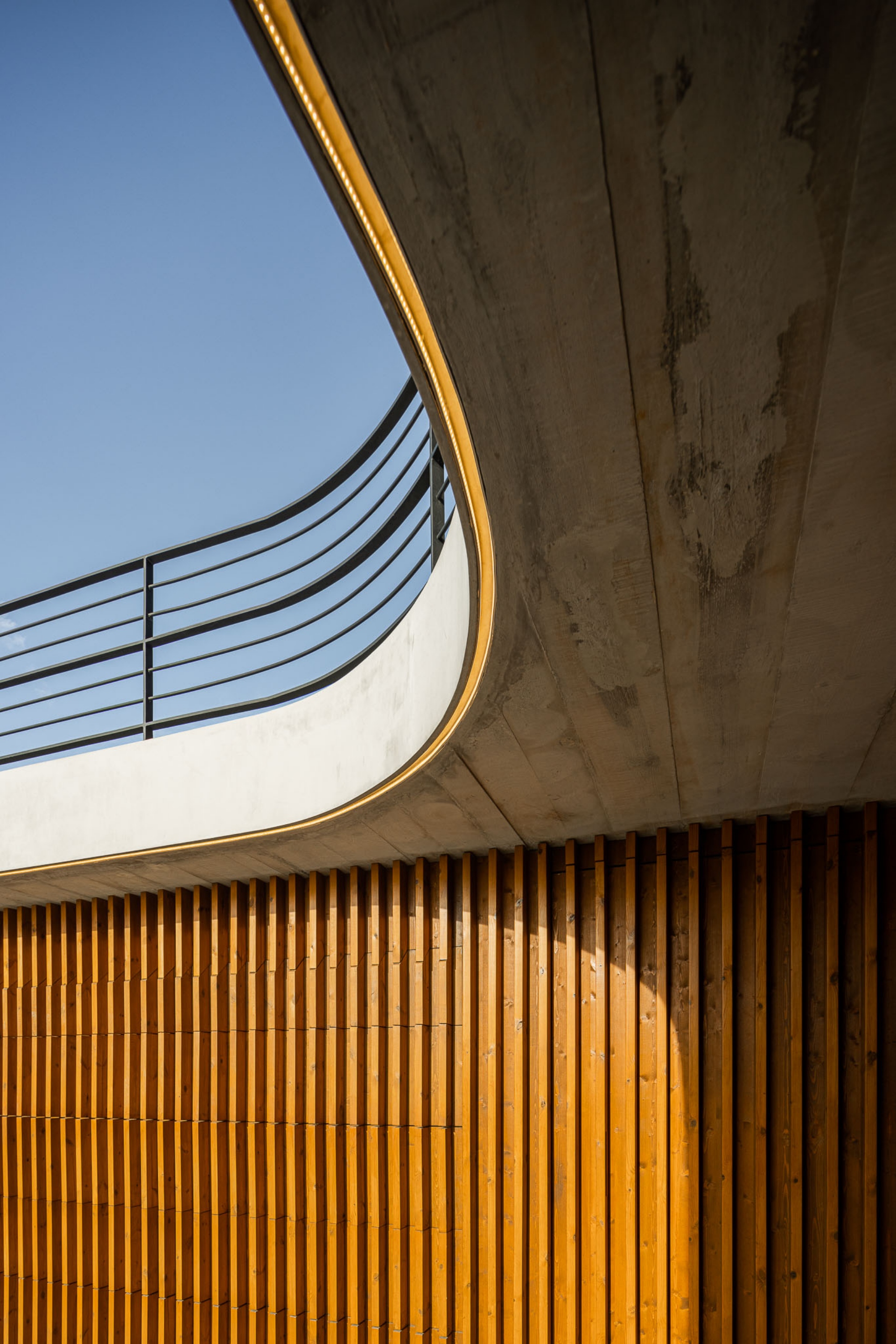
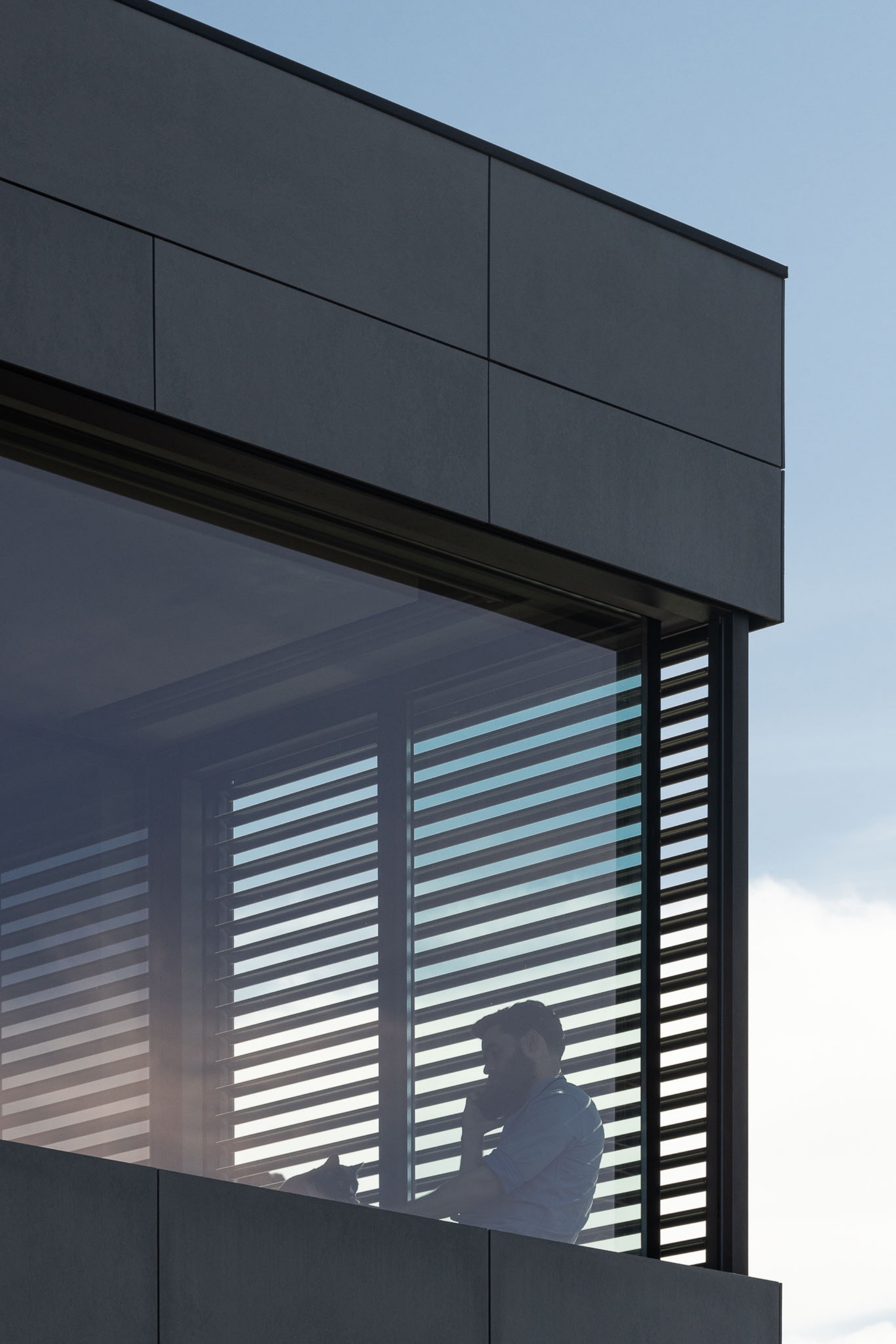
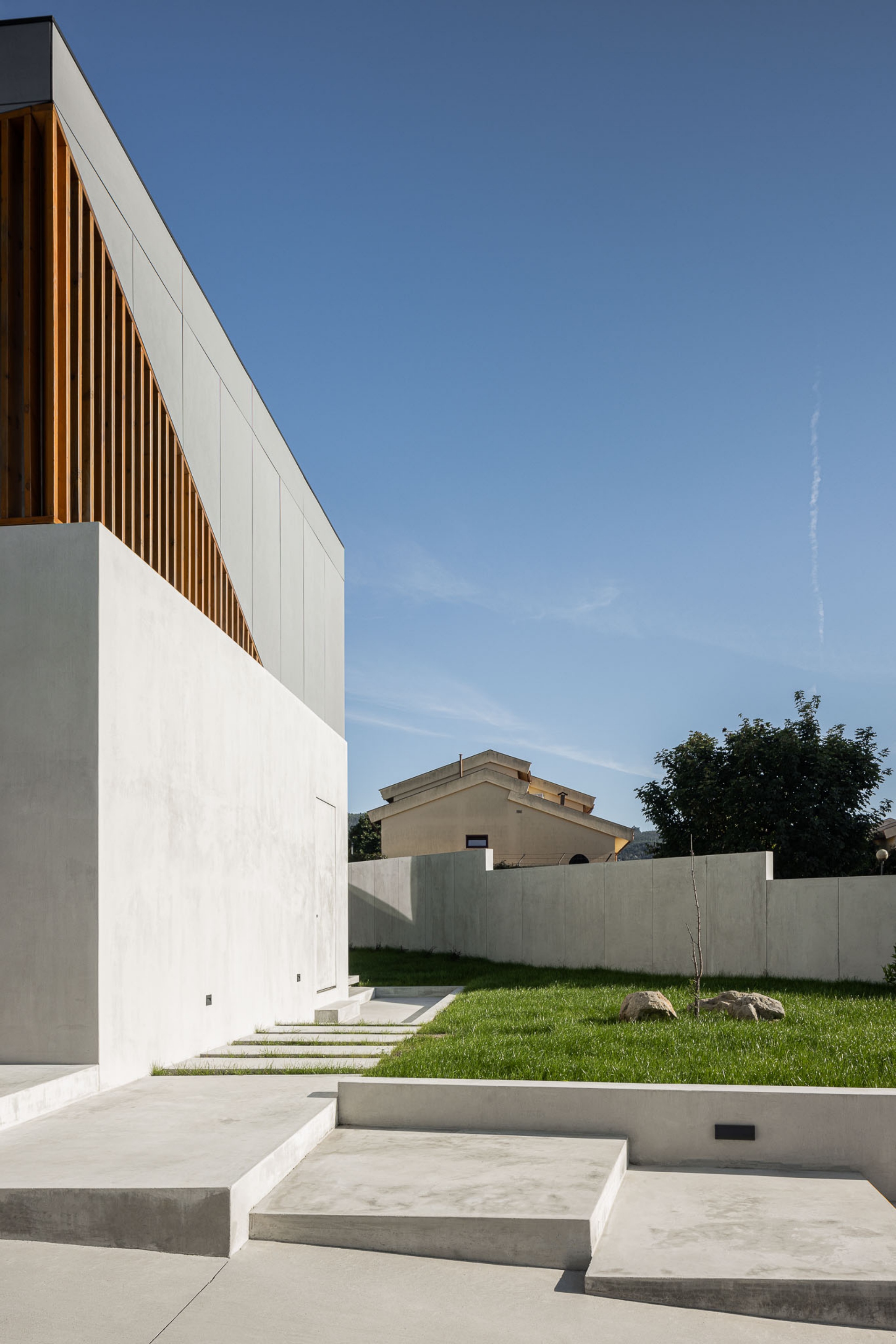
The homeowners had a clear intention about the social atmosphere at the outset. For them, everyone should be visible and part of the family, no matter whether they are cooking, reading, or working from home. At the same time, they wanted to be comfortable at night without feeling uneased by shadows and exterior movements. The normal division between social and private spaces became clearer than usual, due to these constraints. This was the narrative that started building the mental walk-through cementing all the interior spaces. When arriving at the door, the guests don't yet understand how the interior spaces were created, since the volumes don’t let you look inside, so you will need to find your way in. Once the main door is opened, and as you enter the grey hall, there is an expectation about what is going to be seen next. The first rays of natural light are an invitation to the living room. The next steps reveal a high ceiling, which connects the upper floor through suspended stairs using the same wood as seen in the exterior of the house, and all the social and working atmospheres, including the exterior garden.
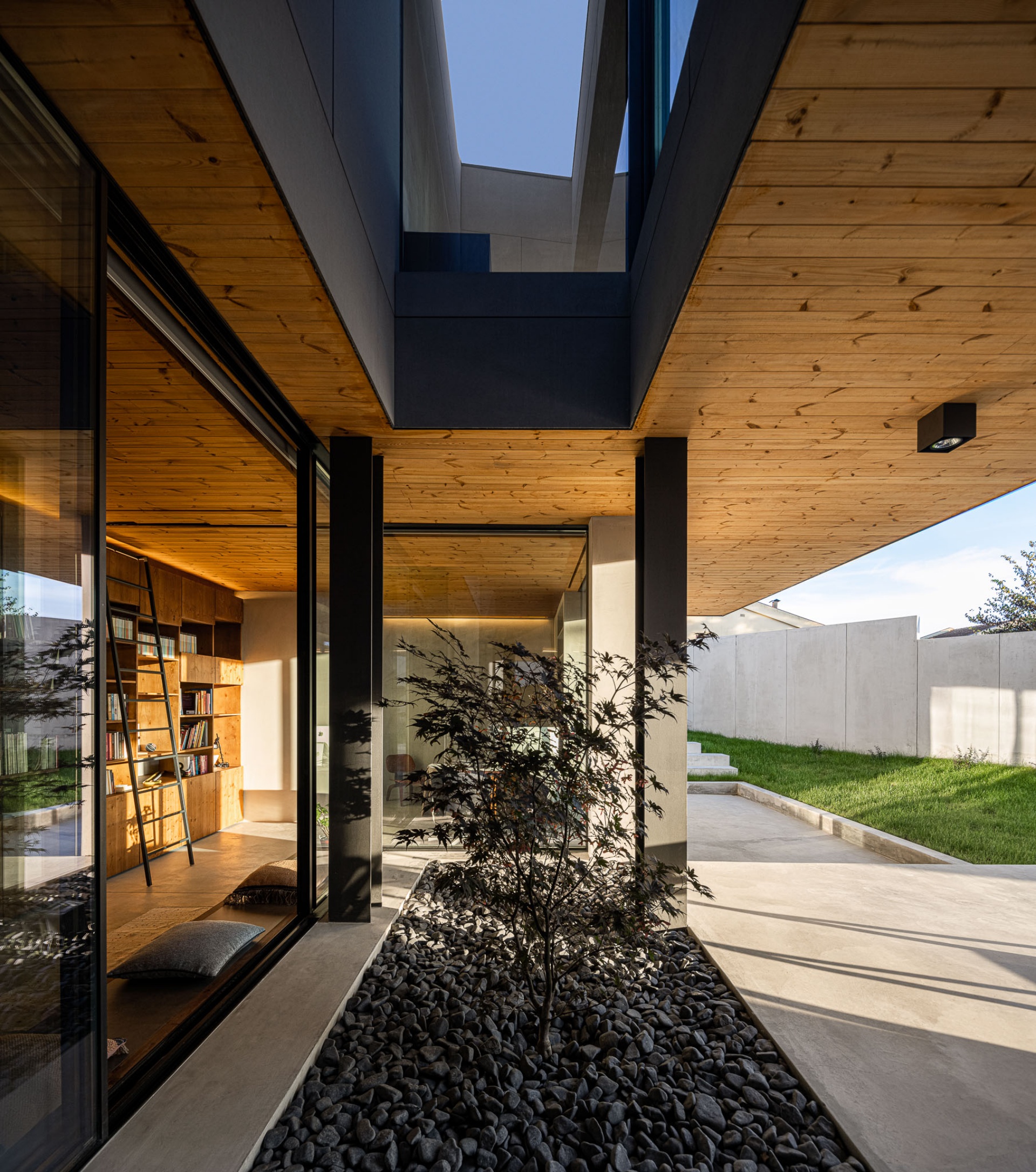
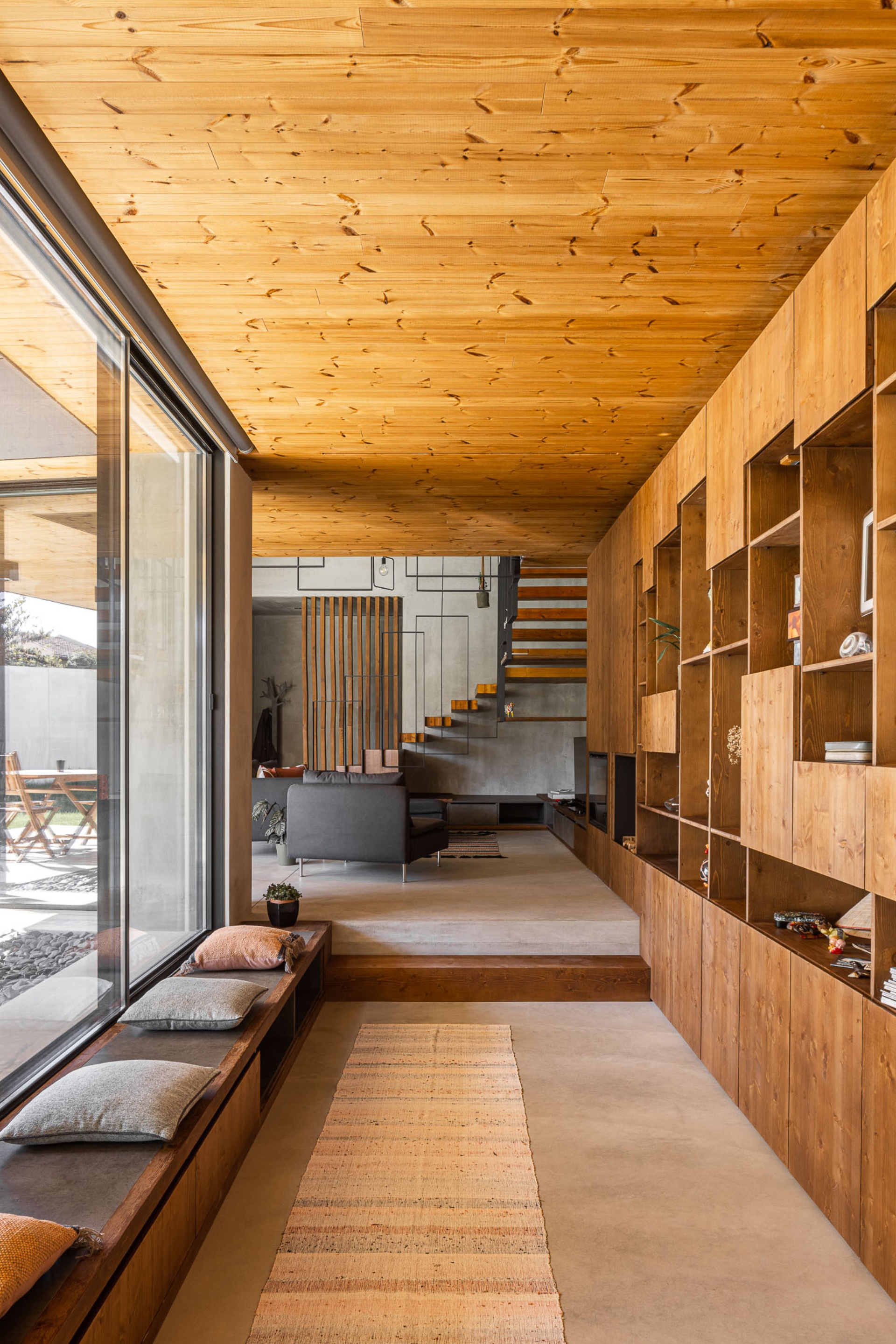
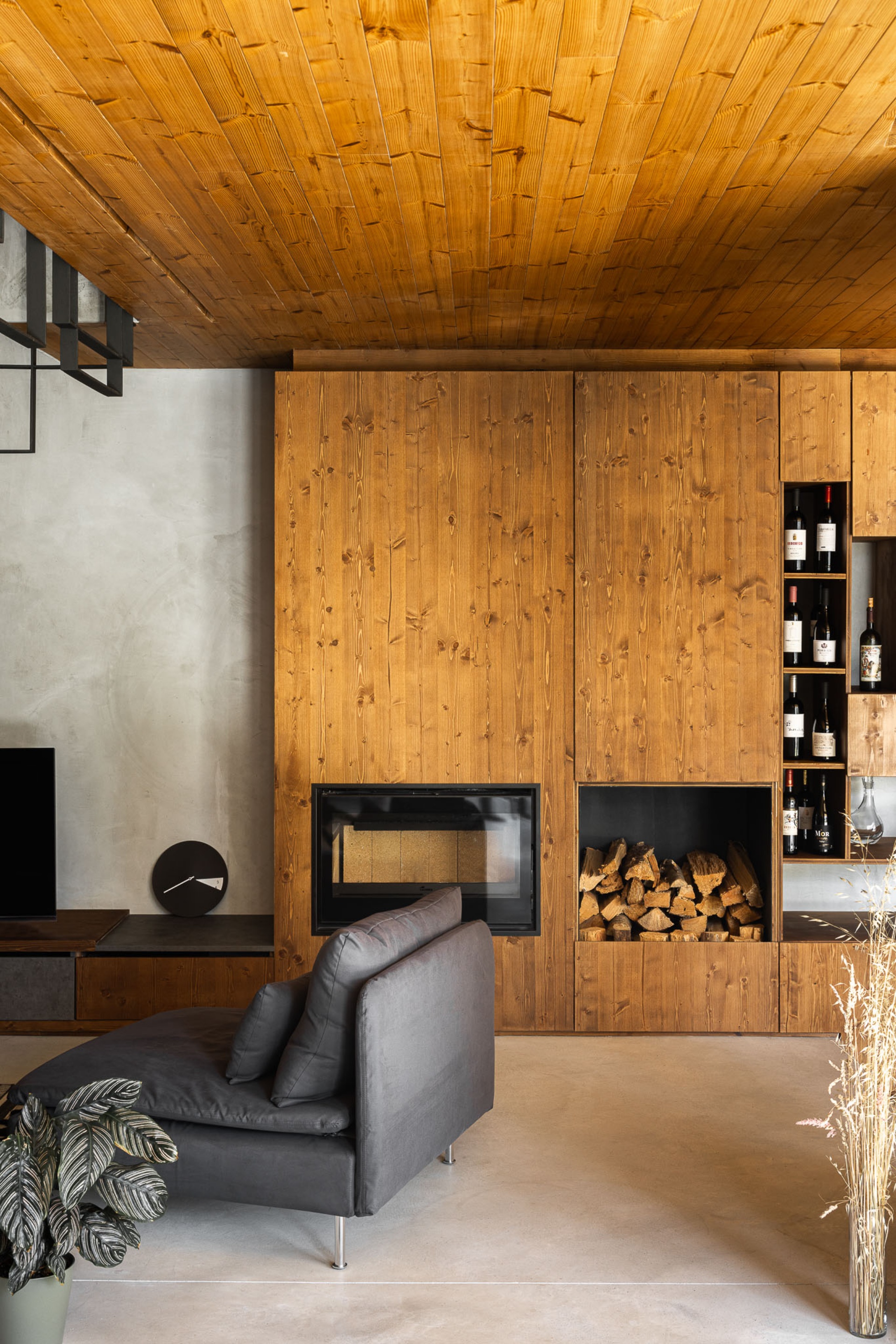
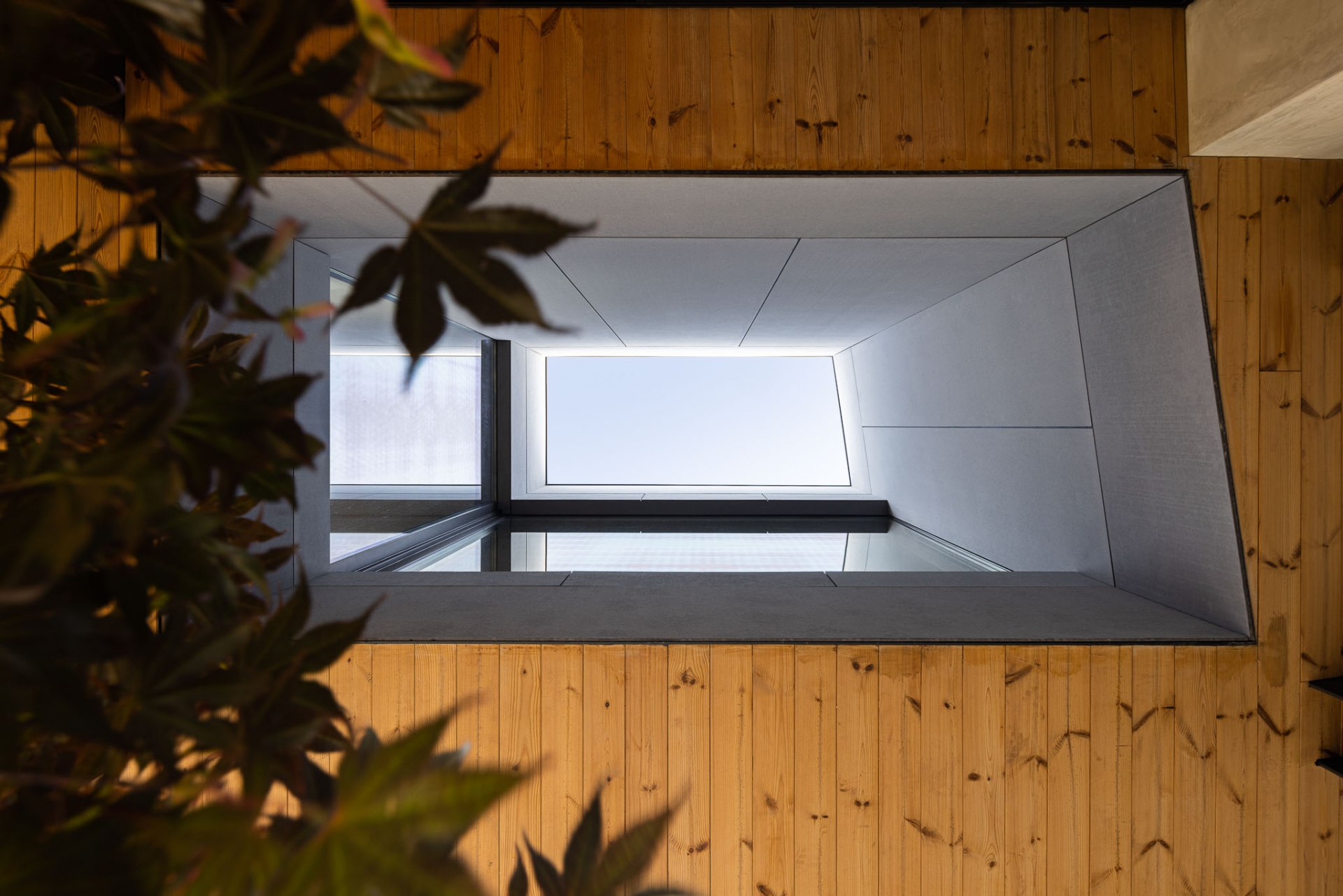
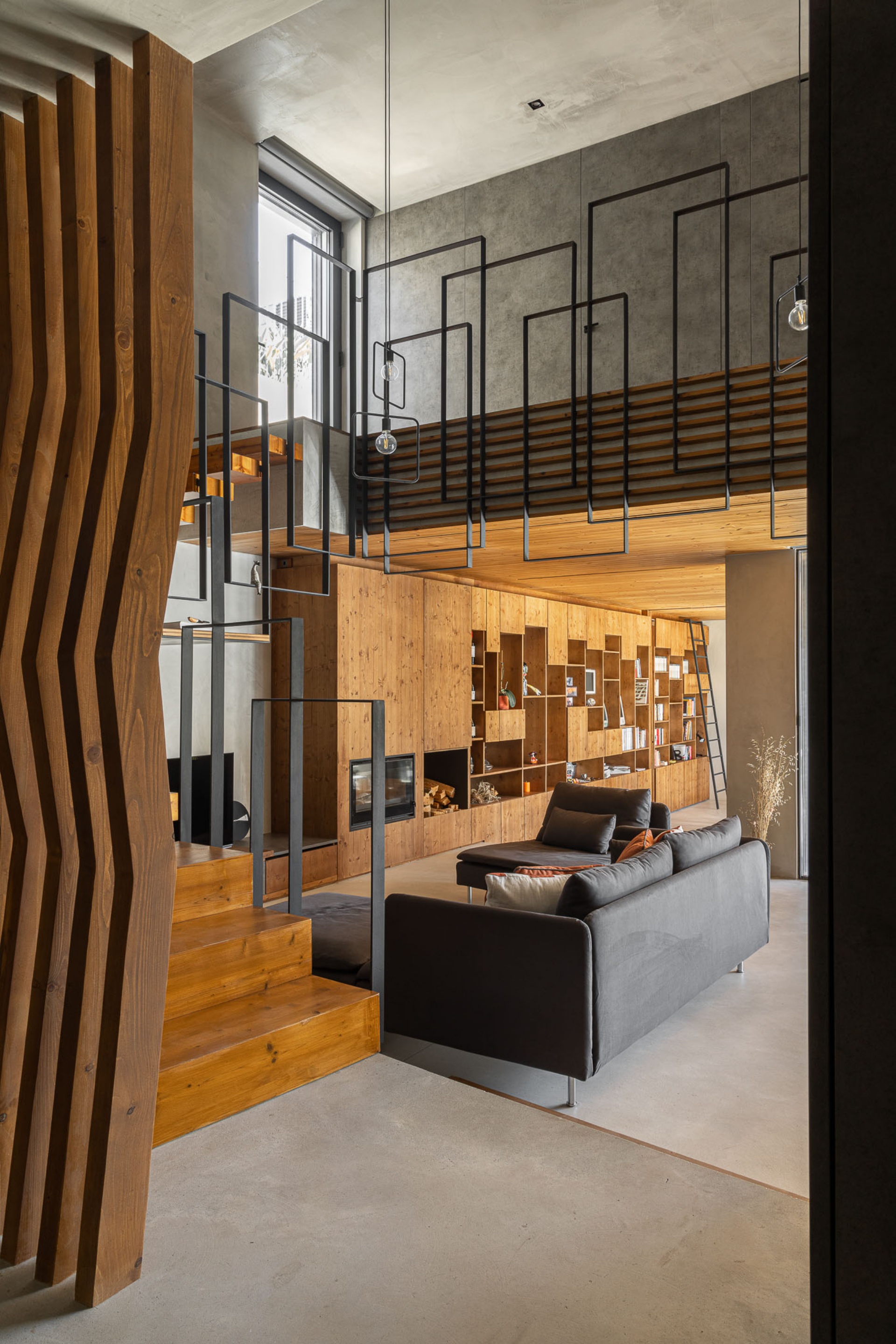
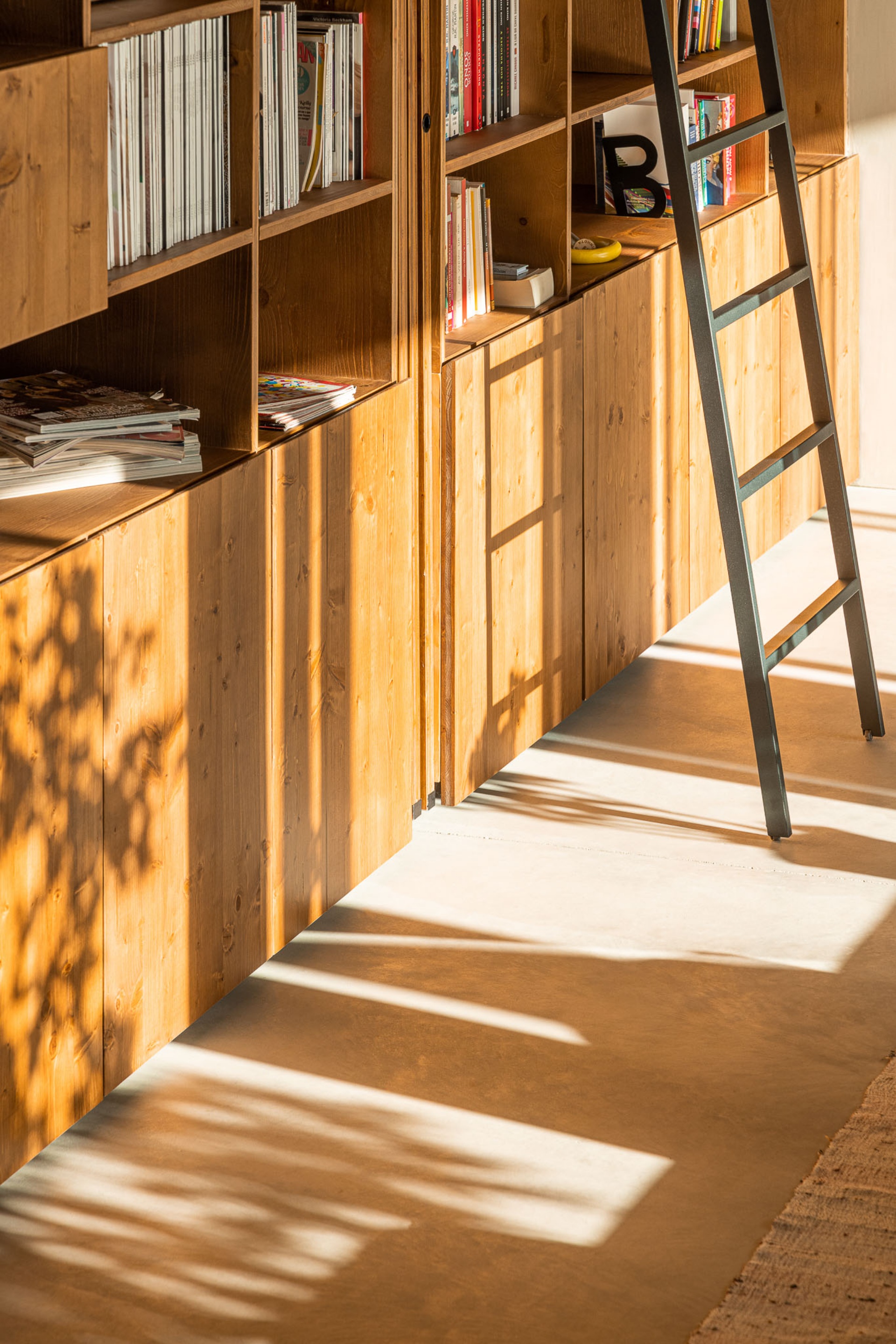
Peoples’ fluidity through spaces, both horizontally and vertically, is connected by virtue of this core space, where the ceiling wood turns and becomes the floor finish of the level above. This game between continuity and transition allows the natural light to disperse into the horizontal planes, both floor and ceiling, converging into a gradient between social and leisure spaces and rest spaces. From very early stages, light reflection over wood surfaces, in contrast with grey and darker materials, was believed as the best way to mark the time running by. What starts as the first moment of the day - during breakfast - is the time where the natural light touches the kitchen floor and the wood balcony. The second moment reflects the light pointing to the dining space, where both the interior and exterior can be connected in this extended semi- exterior space. Here, both the ceiling and the floor materials work to disguise spaces’ boundaries during warmer days. After that, the sun starts getting lower, until it touches the library’s wood furniture, giving it a warm and comfortable feeling, and inviting the transition from the home office to the living room. As this area is the last to receive the natural light, it signals the day cycle has finished.
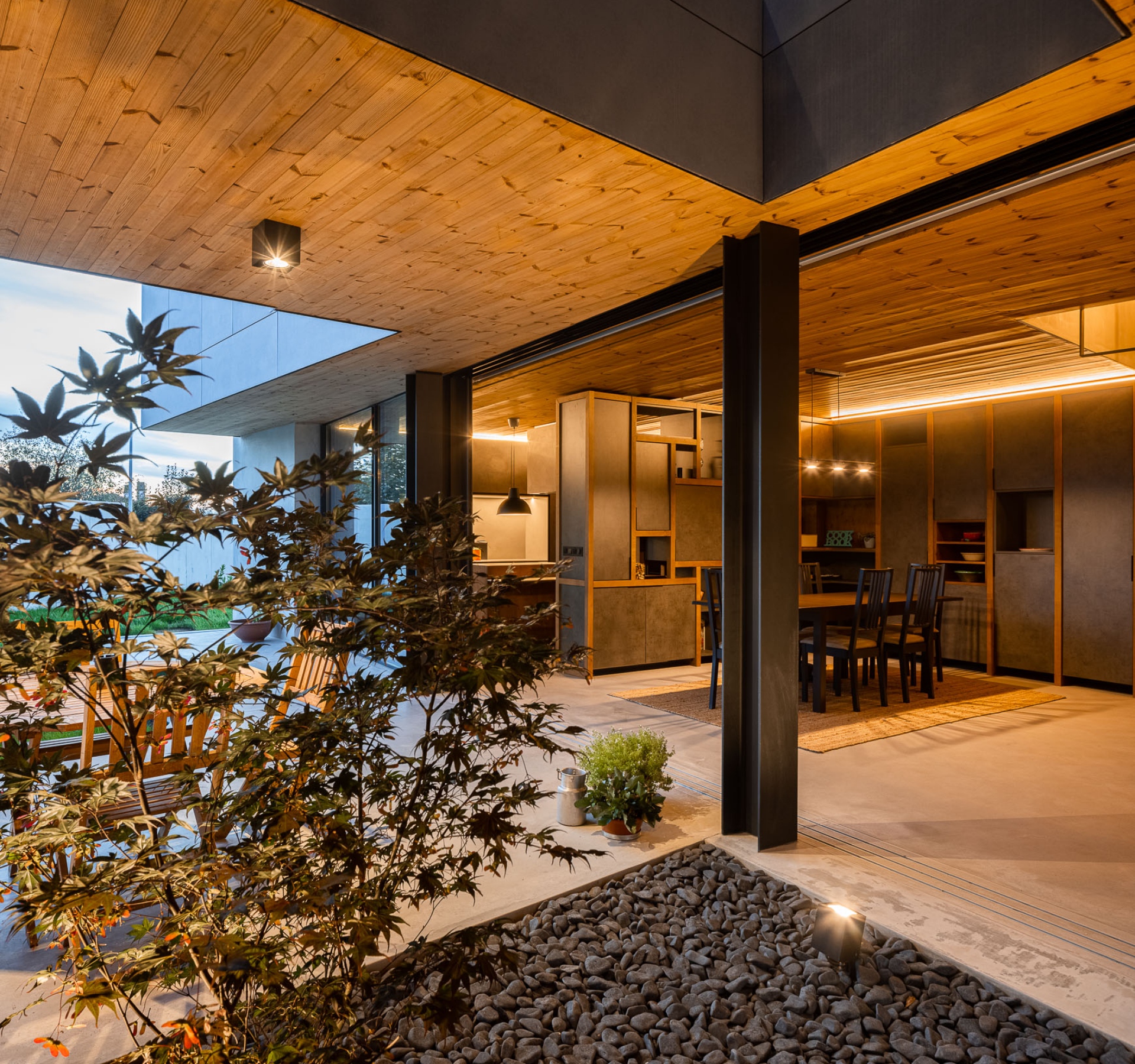
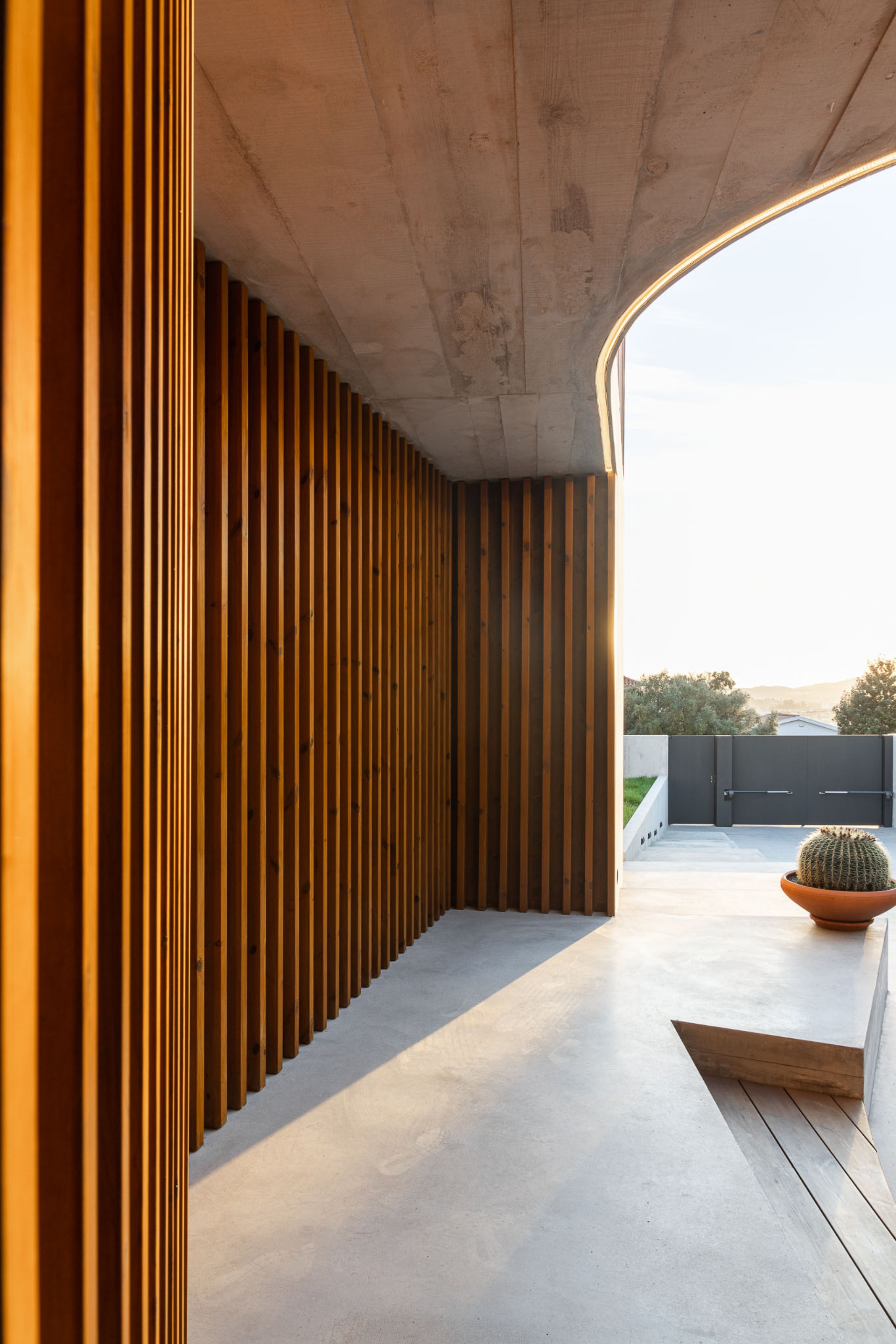
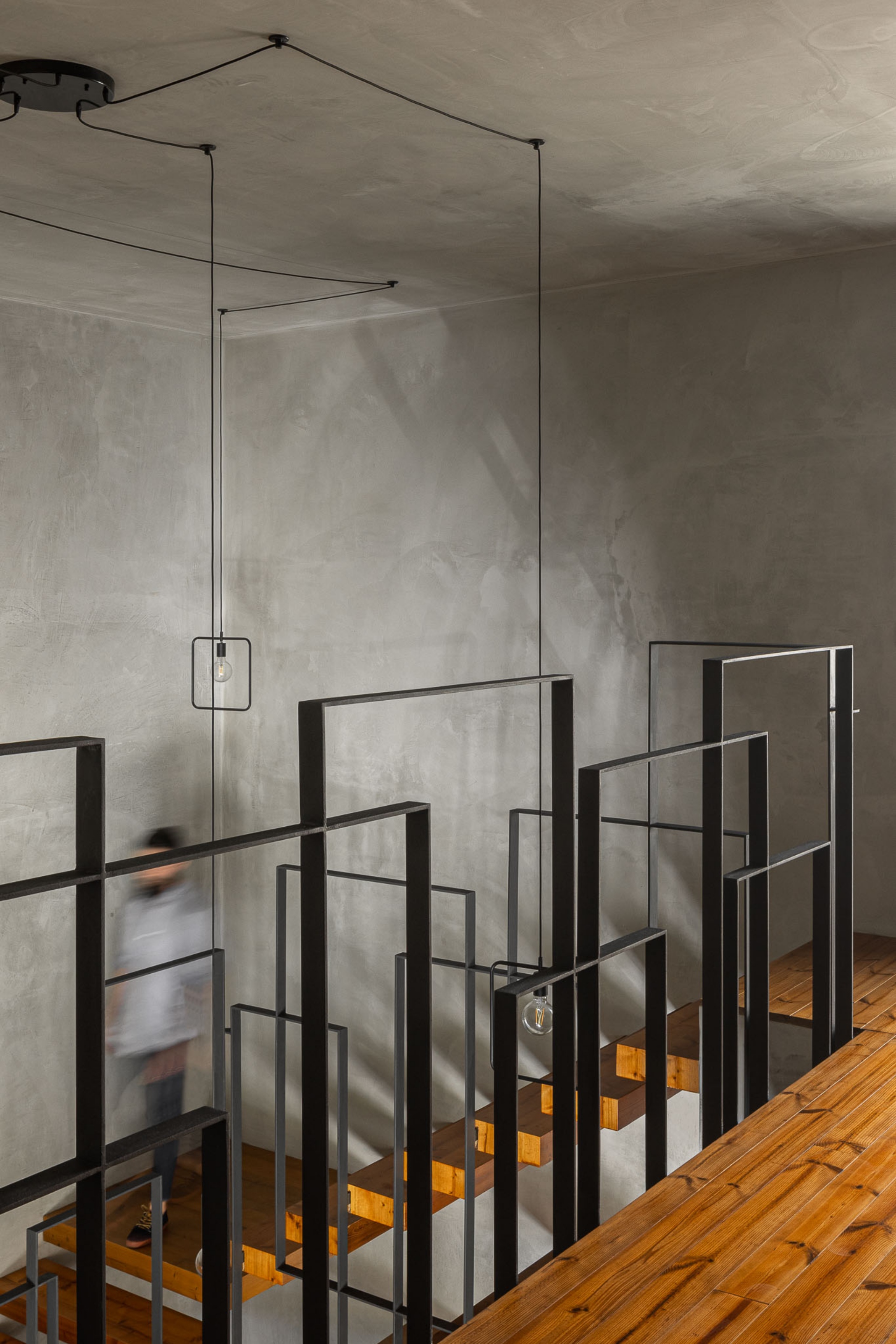
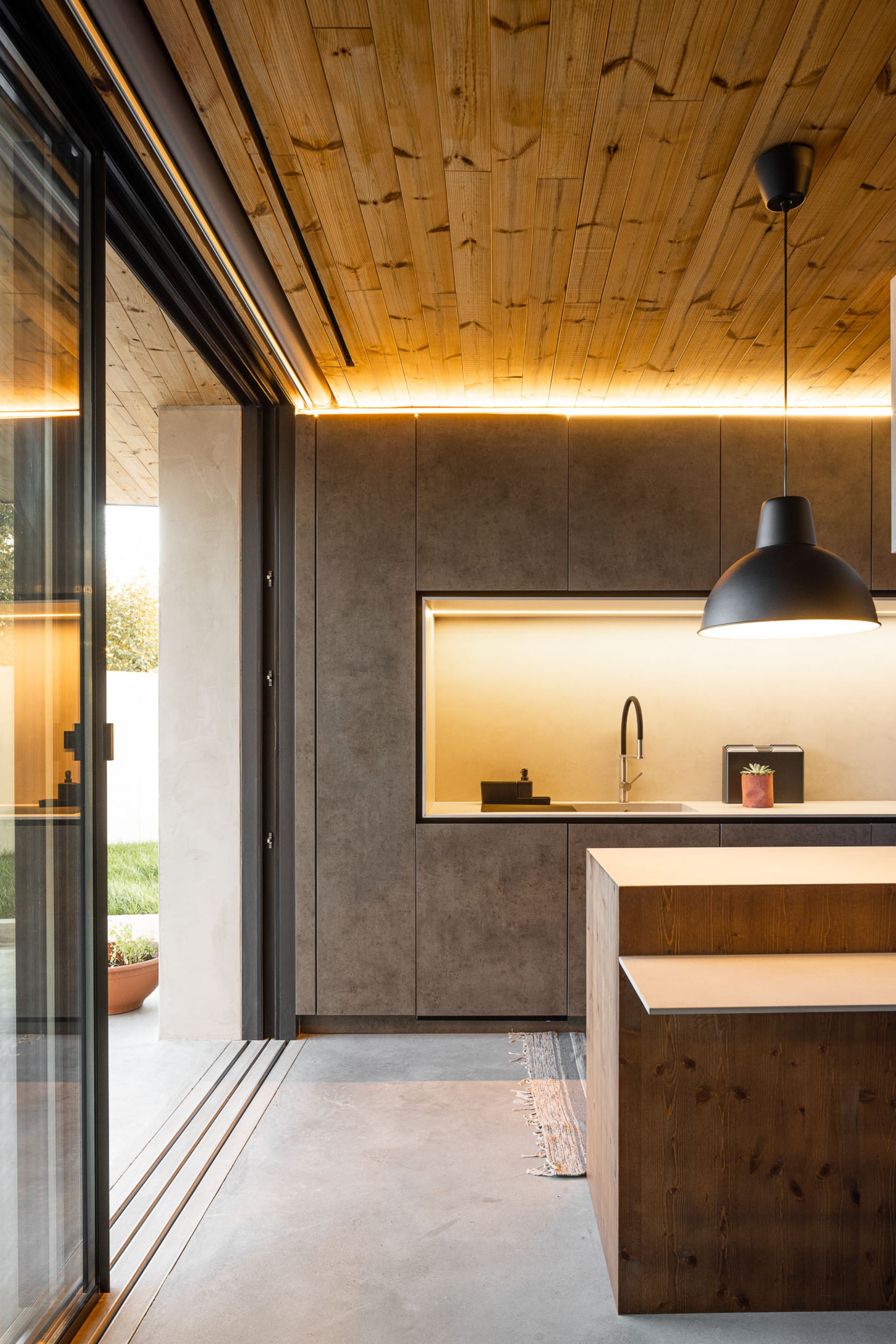
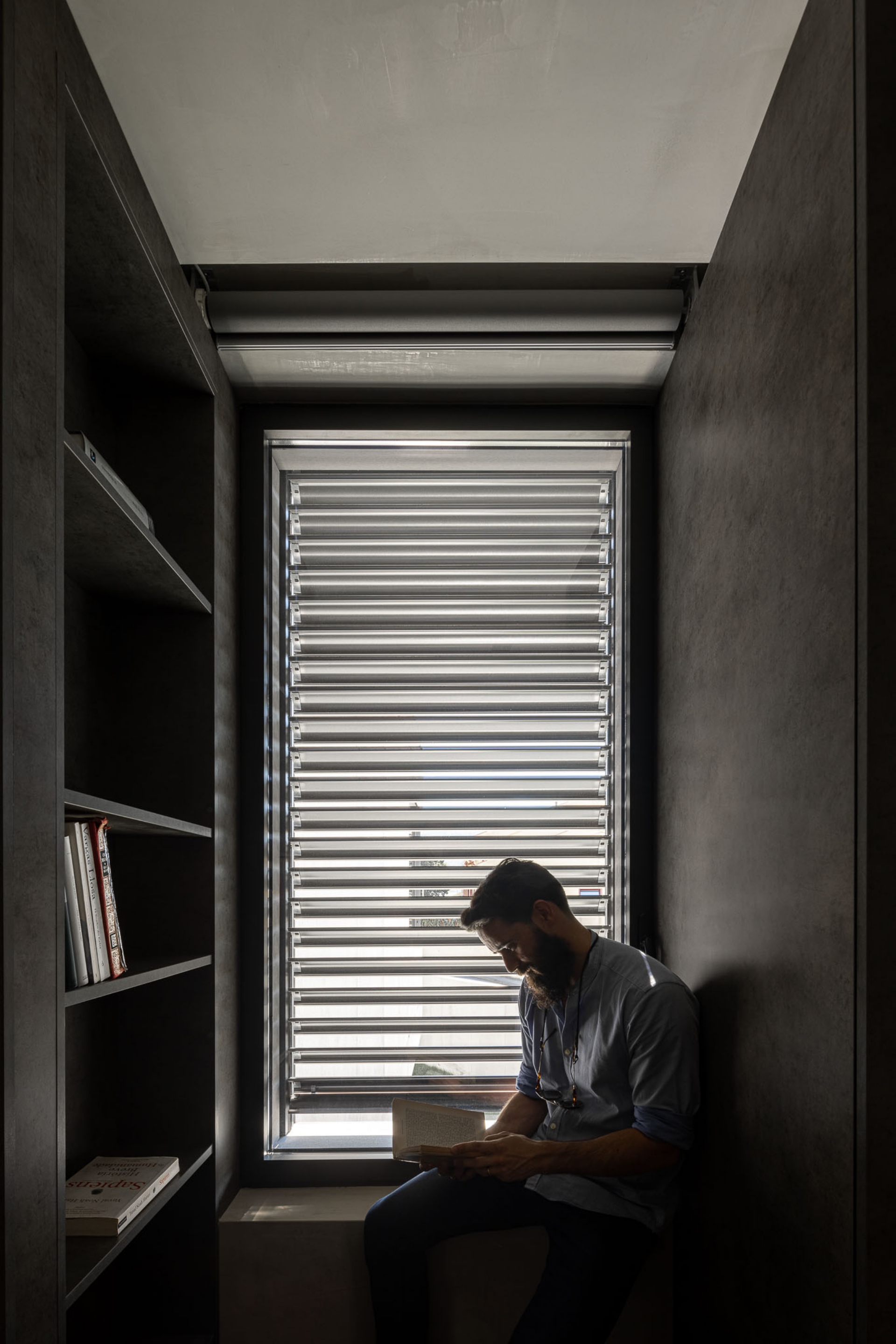
During the day, one can see the natural light reflecting and guiding the inhabitants to the more comfortable areas of the house, while during the night the artificial light is placed in strategic places to extend the feeling of warmth. The confidence and security are achieved with light reflecting on the wood, which makes the entire first level a light box that invites exploration.

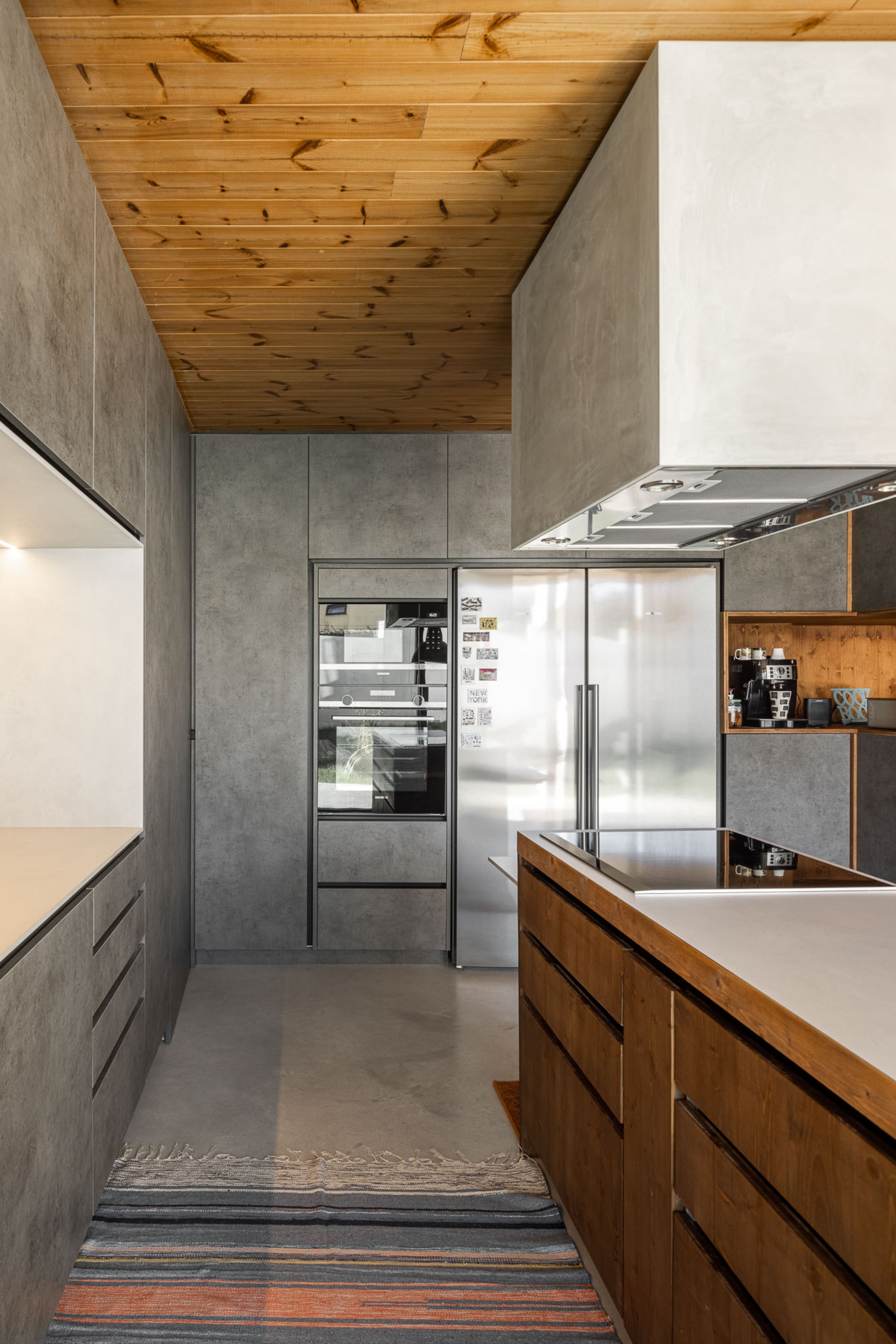
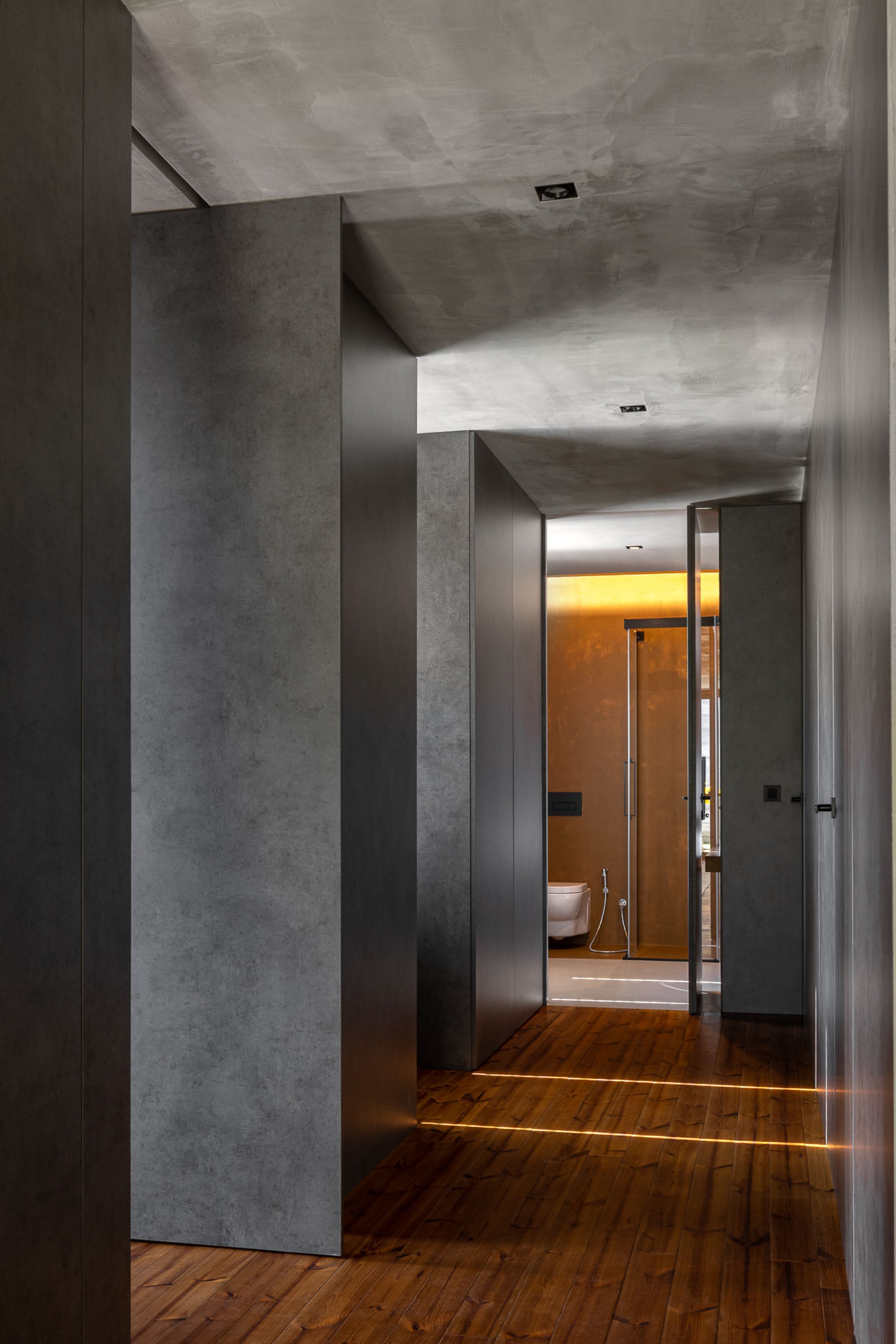
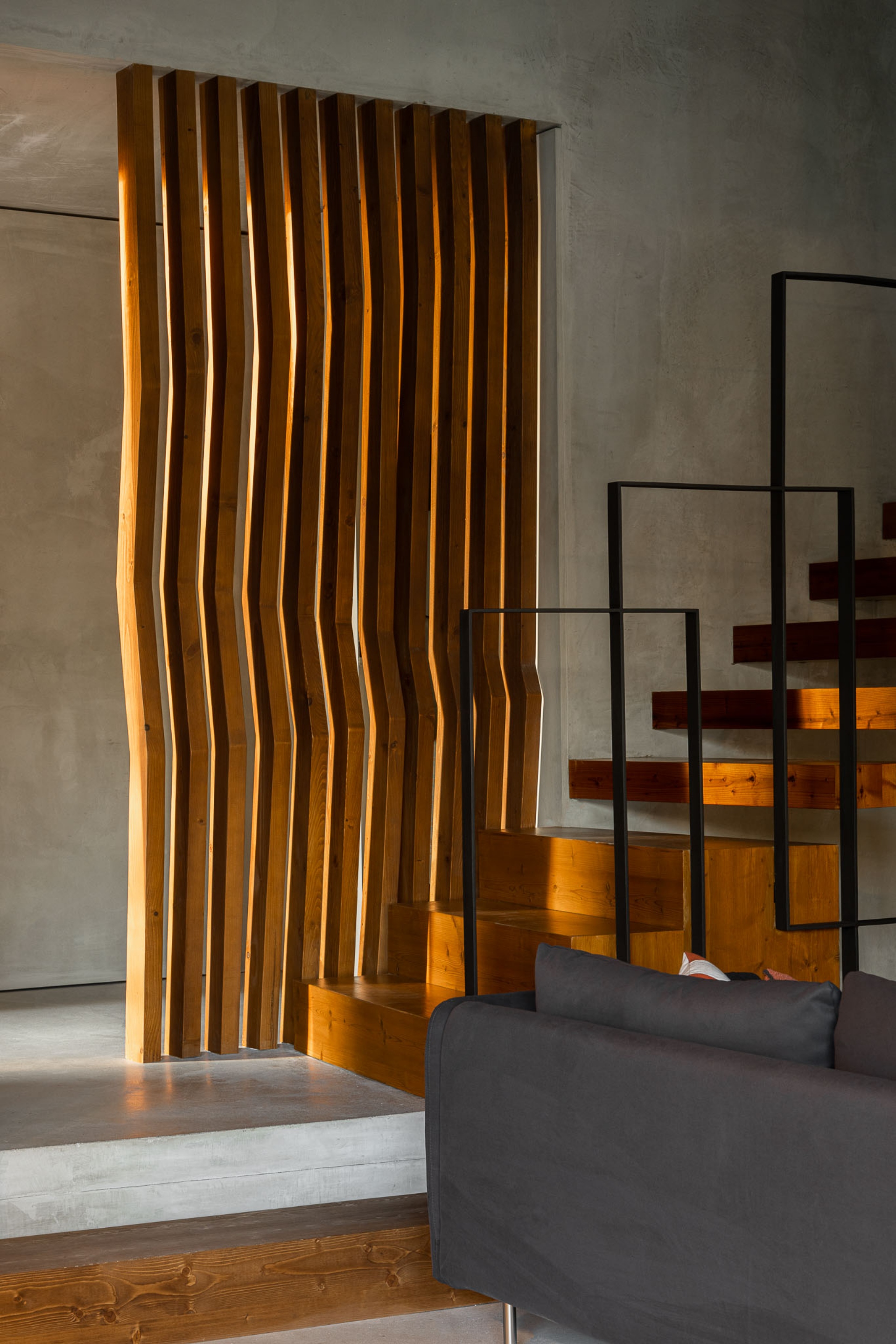
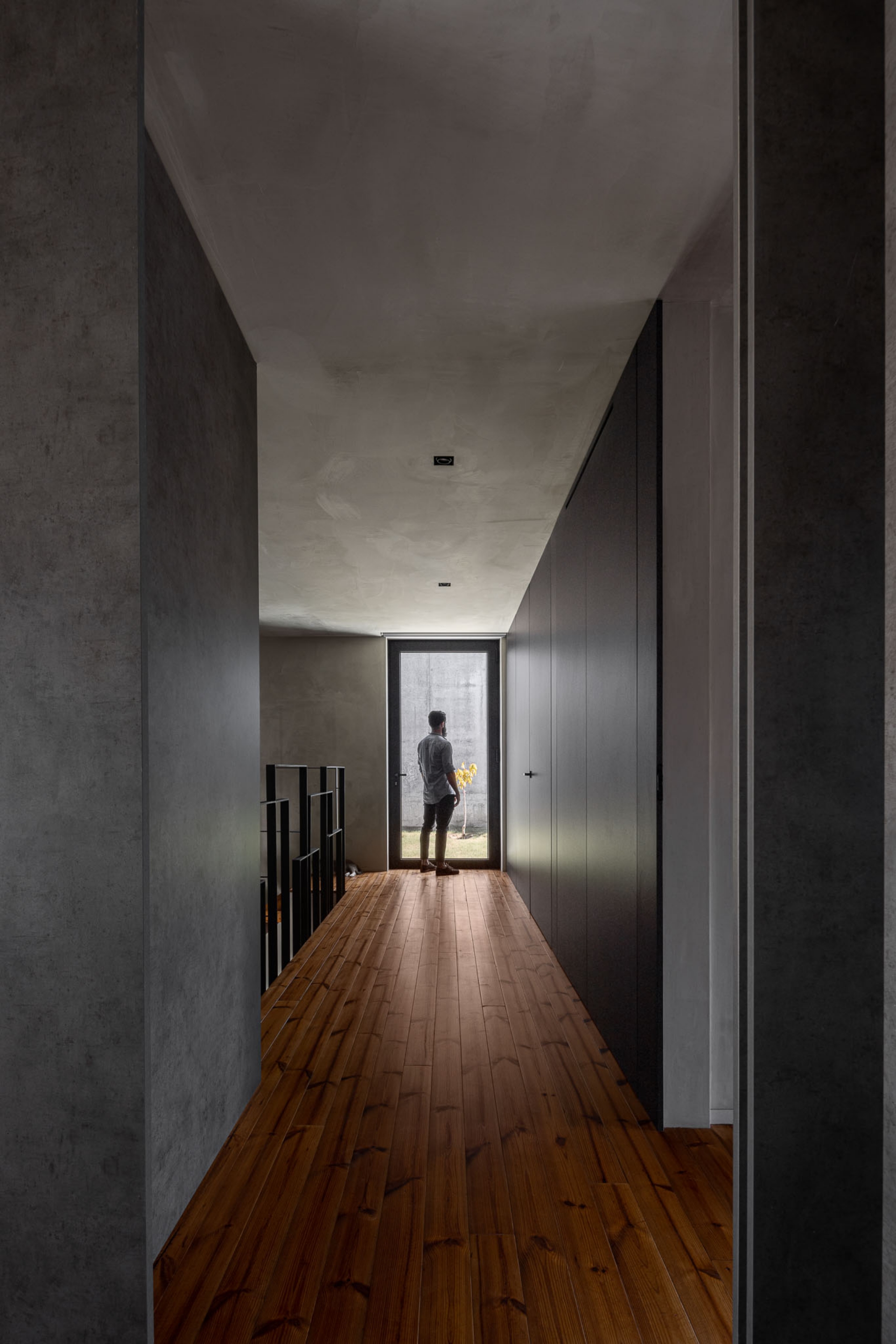
As the family starts the transition from social to private spaces, the main goal was to enable a smoother fruition between a continuous space, as is the first floor with light flowing continuously through the day, and a quieter place where inhabitants go to rest. To achieve this, the corridor’s walls and doors have a dark concrete finish that is only interrupted by a window that lets the light enter. The rooms on the west facade are warmer, as they have received the last hours of sun, intensified by the wood’s warm feeling. There is a continuity of the floor expanding into a balcony protected by thin wood columns filtering the view from outside while letting users see the outside.
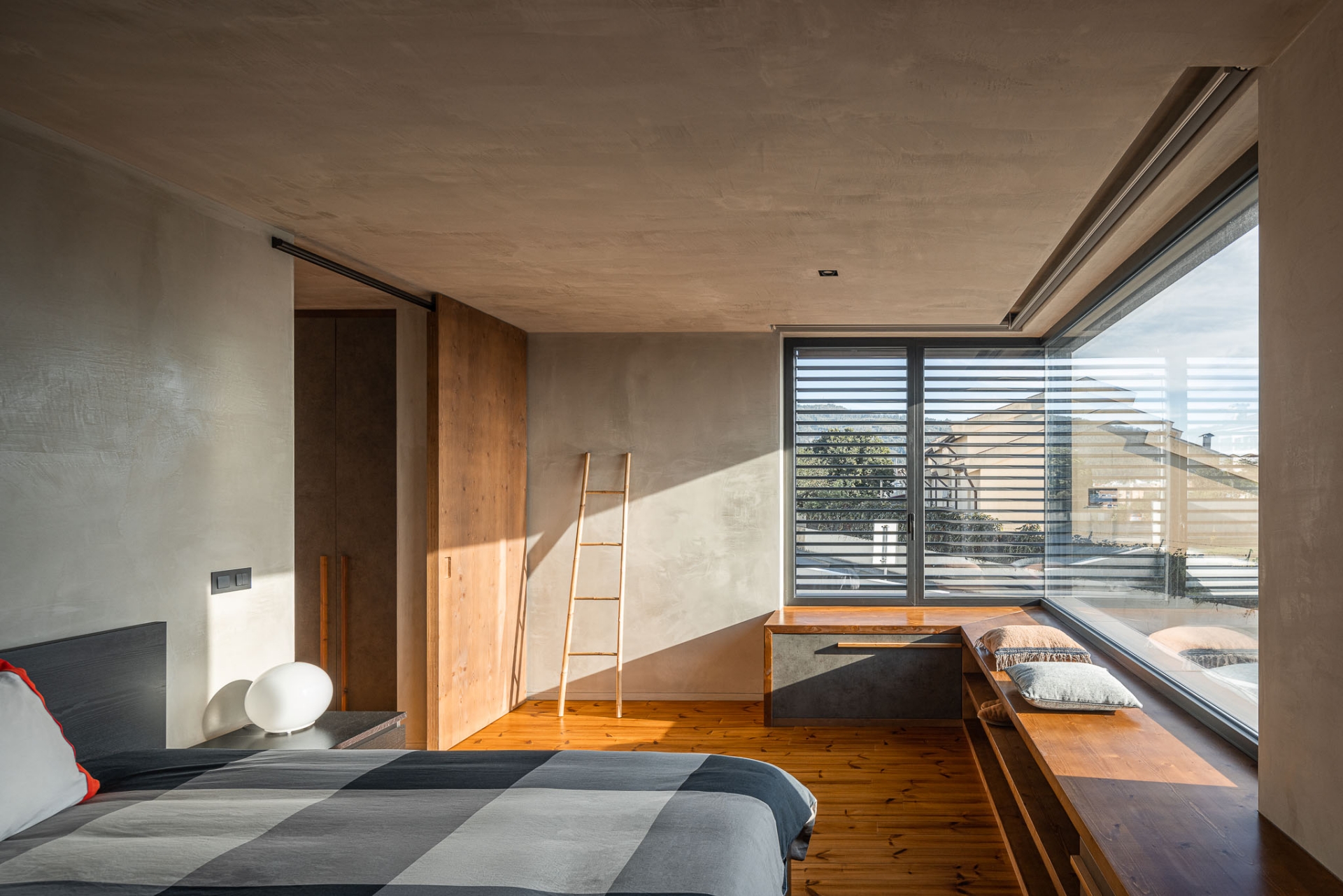
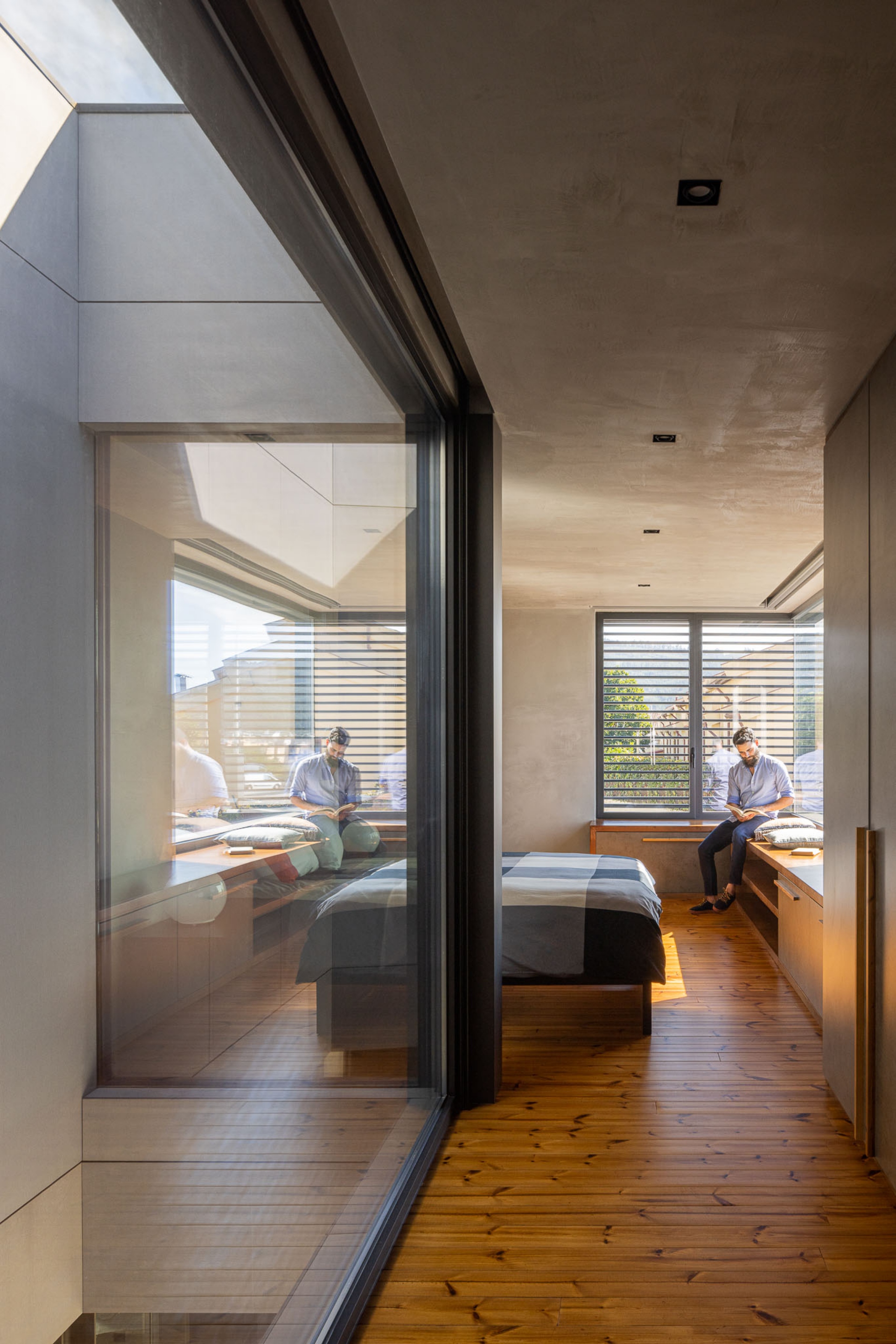
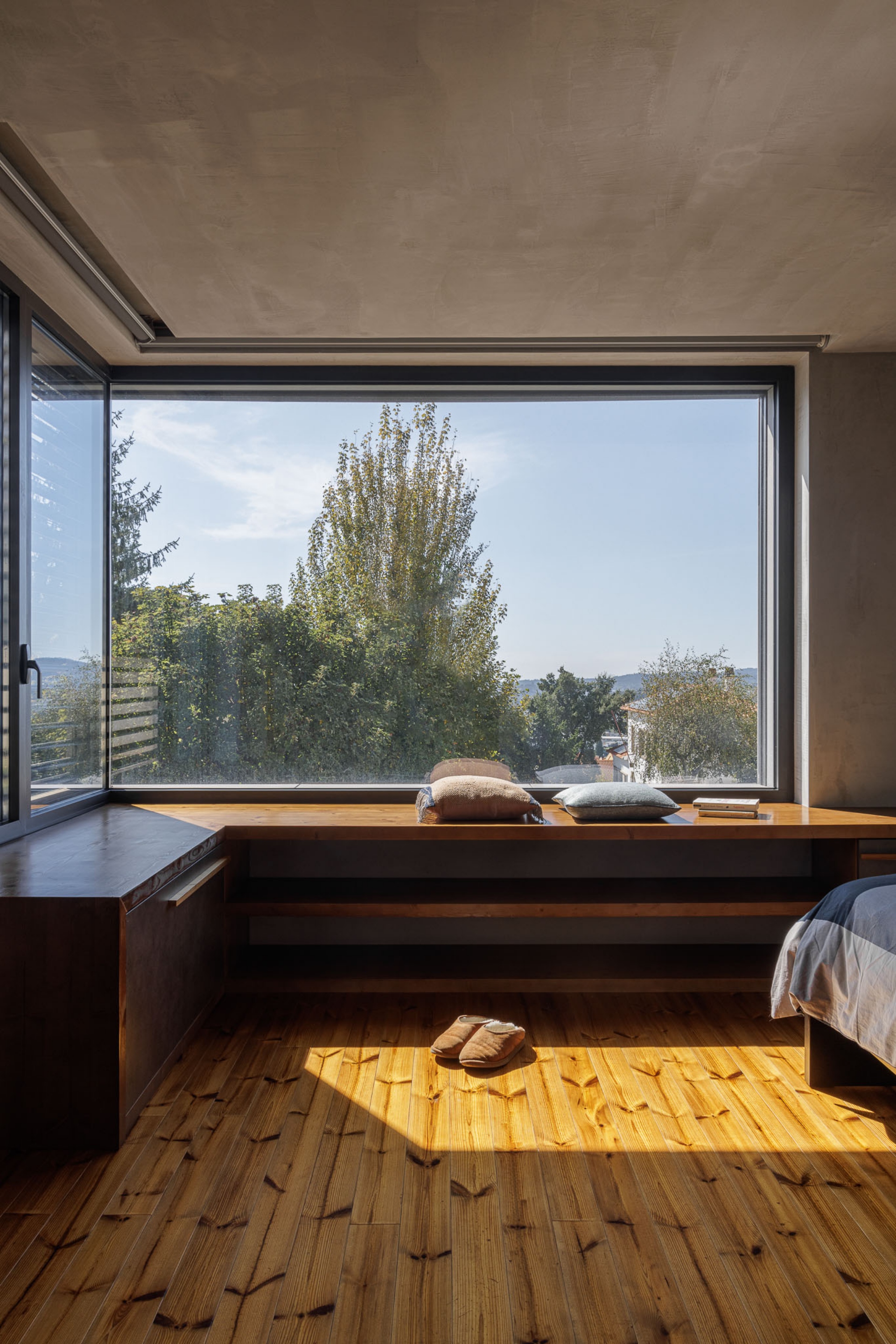
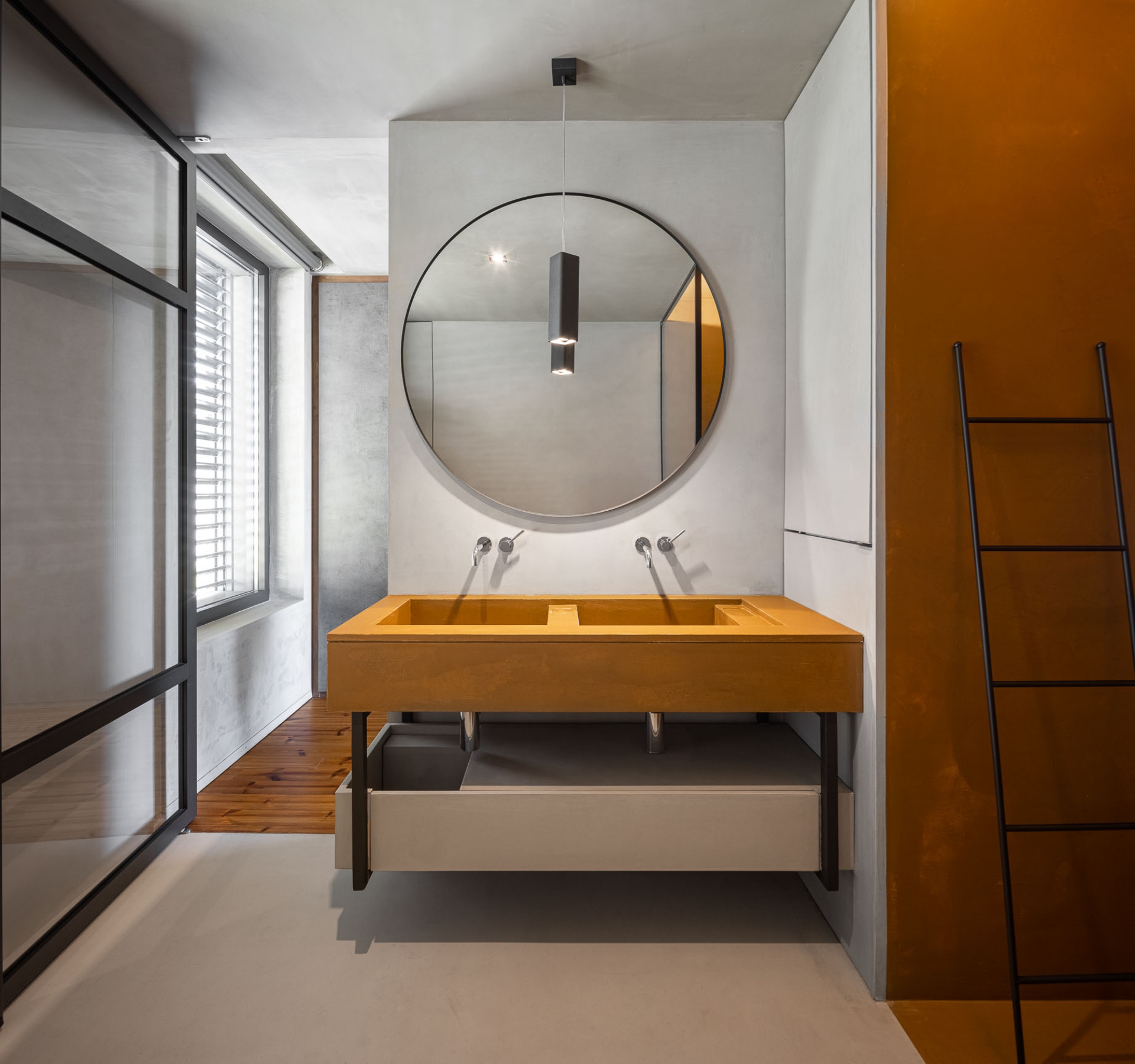
The master bedroom has a direct connection with the vertical winter garden, which reflects the light from the below level into the first level and vice-versa. If there is moonlight, it will enter through this glass and invade the room, illuminating the space. A bigger window has been placed in the corner of the bedroom, creating a particularly interesting moment when the natural rays almost become parallel to the ceiling and floor, shifting the wall from grey to almost white. This game between darker surfaces and smaller openings make the upper level spaces quieter and secure, nonetheless without creating the sense of an intimate arena. Even during moments when purely relaxing, inhabitants can connect with the exterior as they wish, either walking to the outside to enjoy the warm wood on the private balcony or letting the moonlight invade the bed sheets through the vertical opening.
